














Mary Langowski has one of the most important tasks at the company — turning around a still unproven and unpro table health care strategy
By Katherine DavisWalgreens Boots Alliance’s new health care chief is set to face the tough task of optimizing and re ning the company’s health care strategy, a years-long e ort that is not yet pro table.
Mary Langowski, a seasoned health care technology veteran who spent time at CVS Health, is replacing John Driscoll as Walgreens’ president of U.S. health
care, the Deer eld-based company announced last month as new CEO Tim Wentworth solidi ed his leadership team. Driscoll, who is moving to a paid senior advisory role, originally joined Walgreens in 2022 with the ambitious task to help reinvent the company as a health care player.
e industry and even some consumers have begun to accept the new identity of Walgreens,
 Langowski
Langowski
which has long been known as a pharmacy retail enterprise. However, investors have yet to get excited by the health care transition due to the segment’s lackluster performance.
Now it’s up to Langowski, 46, to push the health care segment
See WALGREENS on Page 23
To meet demand, restaurants are extending hours, and launching happy hours that irt with midnight
By Ally Marottiomas Rogers emerged from the basement o ce of his Lincoln Park restaurant recently at 11:30 p.m., expecting quiet. Instead, he was met with a deafening roar. John’s Food & Wine, which typically closes at 11 p.m., was full of customers.
“It’s not like people were just lingering (after dinner),” he says. “ ey were coming into the restaurant at 10:30, 11 o’clock.”
Restaurant operators around
the city say Chicago diners are staying out later. In the past six months or so, dinner reservations have pushed back as people increasingly seek places to sit down and eat after 9 p.m. It’s a change from the years following the pandemic, when customers opted to eat dinner earlier, visit only one place per evening and return home.
In fact, late nights at both ne-dining and casual restau-
See DINING on Page 20
Bally’s hunting for $800 million to kick off city casino project.
PAGE 2


The gambling giant plans to begin demolition of the Chicago Tribune’s Freedom Center printing plant this summer
Danny EckerBally’s says it will begin demolishing the Chicago Tribune’s Freedom Center printing plant this summer to clear the way for its casino and hotel complex along the Chicago River, but the gambling giant is still trying to secure $800 million it needs to move forward with construction.
at’s the size of the “funding gap” the Providence, R.I.-based casino company is working to close as it prepares to take control of the Tribune site, a top company executive recently said.
Speaking to the Nevada Gaming Control Board during a March 6 meeting, Bally’s Executive Vice President and Chief Financial Ofcer Marcus Glover said the company is “pretty far along in conversations with a potential partner” to shore up the nancing for the estimated $1.1 billion it will cost to build the casino complex, which is slated for the 30-acre printing plant property at 777 W. Chicago Ave., according to a recording of the meeting.
“We have a funding gap that we’re solving for about $800 mil-
lion, and feel pretty good about those conversations and that being resolved by hopefully summer of this year,” Glover told the board.
e nancing challenge puts Bally’s in the same boat as many real estate developers looking to jump-start ambitious projects, with higher interest rates over the past two years and a tight lending environment hampering new construction. While Glover said during the meeting that Bally’s still projects the 1 million-square-foot project will be open by the third quarter of 2026, nailing down a construction loan remains a formidable hurdle.
e funding gap will also provide more fuel for critics skeptical of Bally’s nancial capacity to take on the project and how motivated the gambling company will be to assume a large amount of debt to build it, particularly as it pulls in substantial revenue from a temporary casino that opened in September at the Medinah Temple in River North. Bally’s must open the permanent casino within three years of opening the temporary one, according to the agreement it
ORPHE DIVOUNGUY ON THE ECONOMYsigned with the city of Chicago to open the casino. Whether that deadline will be strictly enforced remains to be seen.
In an interview with Crain’s, Glover said he’s not concerned about the company’s ability to land nancing for the project. Casino operators, he said, typically have access to funding partners that traditional commercial real estate developers may not.
Glover declined to share the name of the partner with whom Bally’s is negotiating for the Chicago project.
He also said Bally’s is well on its way toward meeting the $1.34 billion minimum that the company is required to invest in eligible parts of the casino project, per its agreement with the city. Glover said Bally’s has invested more than $500 million toward that e ort on a range of expenses including licensing fees and the setup of the temporary casino. e $200 million acquisition of the Freedom Center site was also part of that calculation, though the agreement with the city speci es that the purchase of the site does not count toward the minimum capital investment.
In a written statement to Crain’s, the mayor’s o ce said, “Bally’s have advised us that they will” honor the terms of their agreement with the city to invest $1.34 billion into the company’s casino operations.
“Our various advisers have indicated to us that Bally’s is going through the normal nancing process. erefore, we have no concerns at this time,” the statement said.
Who’s committing
e $300 million that Bally’s has lined up thus far toward the $1.1 billion cost of the permanent casino comes from Oak Street Real Estate Capital, the Chicago-based investment rm that bought the Freedom Center site as part of a 2022 sale-leaseback arrangement with Bally’s. Oak Street and its New York-based parent company, Blue Owl Capital, committed to “fund up to an additional $300 million” for development of the casino project, Bally’s announced when it struck the 2022 deal.
Glover also told the Nevada Gaming Control Board that Bally’s has “gotten clearance” from the city of Chicago on recent changes
to its plan for the hotel portion of the complex, avoiding what appeared to be a potential setback.
e company said publicly in January that city water pipes below the printing plant were forcing it to nd a new location for a 400room hotel tower that was designed to be on the northern edge of the property. Bally’s plans to include 100 hotel rooms on the roof of the casino complex and build the 400-room hotel elsewhere on the property as part of a later phase of construction.
Bally’s recently reported that February was its busiest month yet at the temporary casino, which had 106,000 visitors — up 20% from January — and generated adjusted gross revenue of $9.9 million, a 6.5% month-over-month increase.
e casino generated more than $1 million in local tax revenue in February, a 10% jump from January and the rst time it had reached seven gures for that monthly gure, according to the company.
Industry publication Casino.org previously reported Glover’s comments on the Chicago casinonancing gap.
Justin Laurence contributed.

espite a dip in housing demand that prompted a price adjustment in the middle of 2022, there was a modest resurgence in demand last year. However, a lag in supply pushed house prices upward, reversing the much-needed rebalancing of the housing market and contributing to last year’s decline in housing sales, reaching a new low.
e primary challenge facing most Americans today continues to be housing a ordability. Currently, a household requires more than $106,000 to comfortably a ord the median-priced home in the United States. In Chicago, this gure is slightly lower, at $105,000, nearly $40,000 more than in January 2020, before the onset of the pandemic. is escalation is attributed to consistently higher house prices and the rise in mortgage rates, nearly doubling the typical monthly mortgage payment over this period.
Despite these a ordability hurdles, the upcoming 2024 spring home shopping season appears to hold promise for potential homebuyers, sellers, investors, mortgage loan o cers and real estate brokers. is optimism stems from an anticipated increase in supply, which should lead to a healthier level of activity and a more balanced
housing market. When it comes to housing demand, all one has to do is look at the state of the labor market.
e unemployment rate remains low. Labor productivity has increased. Annual wage growth is only down slightly, to 4.3% last month from 5.9% midway through 2022. Meanwhile, consumer price in ation, measured by the consumer price index, has fallen further, from almost 9% to just 3.1% during the same time period. e rise in real wages has prolonged the economic expansion.
On the supply side — remember those homeowners sitting on the sidelines, unwilling to relinquish their low mortgage rates? Nationwide, the in ux of existing homes on the for-sale market in February has increased 21% when compared to last year, with active inventory also rising 12% from a year ago.
Coupled with a record number of apartment completions and a rebound in single-family housing starts, mainly townhouses and condos, that began last year, the available housing stock is poised to continue expanding in 2024.
While builders still face major headwinds, such as a shortage of skilled workers and escalating land costs due to stringent land use restrictions, there’s growing support for reforms that could help. More than 4 in 5 adults now support modest densi cation in their neighborhoods in order to improve housing a ordability. Governments at all levels are also taking notice.
States across the country have passed legislation to supersede exclusionary zoning that sti es supply at the local level. And federal agencies have tied a ordable housing requirements to funding for infrastructure projects. ese developments signal a departure from restrictive zoning policies that governed
building practices for decades. While housing conditions vary greatly across regions, many markets are nding themselves in a somewhat healthier position, with more housing supply compared to last year. Altogether, more supply means more options for potential homebuyers and renters. Less pressure on house
price and rent growth also means less upward pressure on interest rates. Declining in ationary pressure means the economy is poised to continue to expand. Orphe Divounguy, a senior economist at Zillow Group and executive adviser at Quantitative Research Group, writes a monthly column for Crain’s.


The Virginia-based company will need to convince federal regulators that less is more
Mark WeinraubTo win government approval for its $35 billion acquisition of Discover Financial Services, Capital One is going to have to prove that less is more, lawyers and analysts said.
Capital One must show that its recently announced deal with Riverwoods-based Discover will help competition despite reducing the number of credit card companies on the market as the combined firm can take direct aim at industry giants Visa and Mastercard, theoretically leading to lower fees and better rewards in the battle for customers.
of skepticism. You will see a heightened degree of scrutiny.”
Recently, the U.S. Federal Trade Commission, eight states and Washington, D.C., sued to block grocery giant Kroger’s $24.6 billion acquisition of Albertsons, citing concerns about reduced wages for workers and higher prices.
The credit card deal, which was announced on Feb. 19, already is facing pushback on Capitol Hill.
And the credit card deal, which was announced on Feb. 19, already is facing pushback on Capitol Hill.
For the 11th straight year, the Chicago area has been named the top region in the country for corporate investment by Site Selection.
The corporate expansion magazine chose the region due to Chicago’s continual outpacing of “all other regions in the nation, with an influx of new corporate locations and expansions,” according to World Business Chicago.
According to a 2023 year-in-review report from WBC, last year 163 “pro-Chicagoland decisions” created more than 23,000 job opportunities. e decisions consisted of 117 expansions and 46 relocations or “new market entries” and generated more than $1.87
By Corli JaySite Selection gave the city the title for the 11th year in a row for continually outpacing ‘all other regions in the nation’
In the area of startups, Chicago ranked in the top spot for the amount of venture-capital funds that have gone to Hispanicfounded companies.
“There are lots of pro-competitive arguments that could be made here,” said Jeff Cross, a partner at law firm Smith, Gambrell & Russell. “Visa and Mastercard are the big behemoths. This merger is now going to make Capital One-Discover be a competitor to Visa and Mastercard.”
But it will not be an easy sell.
In December, updated merger guidelines from the federal government have lowered the market share threshold at which proposed combinations will be presumed as harmful to competition.
“In the Biden administration, there is a tendency to disfavor large transactions that look anticompetitive,” said Joe Silvia, a partner at Dickinson Wright and former counsel to the Federal Reserve Bank of Chicago. “I would expect a higher degree
With a de cit of more than 200,000 units, the state is making it harder for local communities to ignore their shortagesDennis Rodkin
Two decades into a statewide push to boost the suburban stock of affordable housing, recent changes in the program are making it harder for communities to ignore their shortages.
Key changes include giving people who would be eligible to live in affordable housing the power to appeal to the state when a municipality turns down a proposal, while in the past only the developer could appeal, and requiring towns with shortages to report on what obstacles are preventing their construction of affordable
housing.
ese and other changes “make the process more than just something that’s performative,” said Gail Schechter, executive director of Chicago-based Housing Opportunities & Maintenance for the Elderly and a member of the state’s Housing Appeals Board.
“They’re going to make (municipal leaders) take seriously the need for mixed-income housing,” Schechter said.
Widening the power to appeal beyond developers will “fuel the process of getting more housing built,” said Martin Cozzola, housing counsel for
the Chicago group Impact for Equity (formerly Business & Professional People for the Public Interest). That’s because developers, particularly if their proposals include both affordable and market-rate housing, may be hesitant to stir the pot by going over the heads of a municipality’s leaders, while housing activists and residents may not be.
The change to requiring leaders to catalog the obstacles will mean local leaders “are going to have to scrutinize their policies and really look at why
“The merger of Capital One and Discover threatens our financial stability, reduces competition and would increase fees and credit costs for American families,” U.S. Sen. Elizabeth Warren, D-Mass., said on X, formerly known as Twitter. “This Wall Street deal is dangerous and will harm working people. Regulators must block it immediately.”
The U.S. Consumer Financial Protection Bureau recently released a report that showed credit card companies have steadily raised the annual percentage rates they charge customers who carry a balance on
affordable housing

The move reinforces the former meatpacking district’s growing reputation as a hub
High-end furniture company
Steelcase is moving its local showroom to the Fulton Market District after more than half a century in the Merchandise Mart, adding to a run of furniture and design rms that have made the same jump.
e Grand Rapids, Mich.based company con rmed it has leased just more than 28,000 square feet on the top three oors of 811 W. Fulton St., a seven-story building on the eastern edge of the former meatpacking district. Steelcase will take over the showroom space that has been occupied for several years by furniture rival MillerKnoll.
In a related move, MillerKnoll has leased about 23,000 square feet further west in the trendy corridor at 1144 W. Fulton St., according to people familiar with the deal. at building is a block from a building at 1100 W. Fulton St. occupied by furniture giant Herman Miller, which acquired Knoll in 2021 to form MillerKnoll.
e Steelcase move reinforces
Fulton Market’s growing reputation as a hub of designer furniture brands, a shift that has chipped away at the Mart’s local dominance in the sector. In addition to Herman Miller and Knoll, other furniture and interior design brands such as Allsteel, Teknion, Gabriel and Tarkett have all planted their ags in Fulton Market in recent years. Fulton Market even played host to its own “Design Days” showcase last summer during the Mart’s annual NeoCon commercial interior design convention.
“For over ve decades, Steelcase and our community of brands have delivered great Chicagobased experiences in the Mart,” a Steelcase spokeswoman said in a statement. “And while the Mart has served us well over the years, we constantly monitor the needs of the market and the behavior of customers, and this work informs every element of our showroom strategy.”
e statement dubbed Fulton Market “a vibrant and thriving Chicago neighborhood where

the industry is clustering, and it’s become an important destination for the design community.”
A spokesman for Merchandise Mart owner Vornado Realty Trust didn’t respond to a request for comment.
It’s unclear whether Steelcase is subleasing the Fulton Market space from Knoll or has struck a deal with the owner of 811 W. Fulton St. e 70,000-square-foot building is fully leased and
owned by a venture of Brighton, Mass.-based investor Intercontinental Real Estate, which bought it in 2019 for $50.3 million — at the time a record-high price per square foot for a Chicago o ce building. A spokesman for Intercontinental did not respond to a request for comment.
MillerKnoll’s new lease lls vacant space owned by a venture of Chicago real estate rms Fulton Street Cos. and Latsko Interests,
which acquired it in 2022 as part of a $34 million purchase of four Fulton Market loft o ce buildings. Fulton Street, which has been one of the most active buyers of Fulton Market development sites over the past few years, also inked the deal that brought Herman Miller to the neighborhood.
Spokesmen for MillerKnoll and Fulton Street did not immediately return requests for comment.
After securing two big contracts the battery technology company will build out a new research and manufacturing facility
NanoGraf has leased a big warehouse just steps from its new Near West Side headquarters, where the battery technology company will build out a new research and manufacturing facility slated to bring 60 jobs to the city.
After securing two big contracts with the U.S. Army to develop and ramp up production of batteries for soldiers’ equipment, NanoGraf has inked a deal to occupy the entire 67,850-squarefoot building at 455 N. Ashland Ave., the company said in a statement. e industrial building is just more than a block west of NanoGraf’s existing home at 400 N. Noble St., where it debuted a new 17,000-square-foot production facility in December.
e vefold expansion of the company’s Chicago footprint is a milestone for the Northwestern University spino , which has grown recently on the back of multiple military contracts. e Army in December awarded NanoGraf an $8 million contract to boost the supply of its silicon
anode-infused batteries for soldiers, and the company won another Army contract in January worth up to $15 million to develop cross-compatible batteries for soldiers in the eld.
NanoGraf touts its silicon anode material as improving a lithium-ion battery’s capacity to hold a charge by about 30%. Most anodes — the part of a battery that holds a charge — are made of graphite, a material produced predominantly in China.
With the U.S. Department of Defense looking for more reliance on battery-powered equipment and the federal government seeking ways to bring more production of critical technical products back to the U.S., NanoGraf has found itself in position to win big government contracts. e two recent Army deals brought the company’s funding from the Defense Department to $45 million, the statement said.
e new Near West Side facility will house manufacturing space, laboratories, inventory and o ce space that will allow NanoGraf to more quickly ful ll its military

orders and work toward commercialization of its batteries.
“With our second facility, we’ll be able to advance our work on our Department of Defense contracts, ensuring that soldiers have the power they need to complete their missions,” NanoGraf CEO Francis Wang said in the statement.
e company’s growth also forti es the Near West Side’s status as a hotbed of light industrial businesses. e area west of the Fulton Market District — formally dubbed the Kinzie Industrial Corridor — has a long history as a hub of brewers, oral shops, caterers and other smallscale manufacturers operating
out of vintage low-slung buildings. But the NanoGraf expansion follows the recent debut of advanced manufacturing incubator mHub at 240 N. Ashland Ave. to substantially raise the corridor’s pro le.
e 60 new jobs would add to NanoGraf’s current team of 31 Chicago employees, according to a company spokesman. NanoGraf was known as SiNode Systems when it was founded in 2012, based on work by Northwestern professor Harold Kung. The company was co-founded by Samir Mayekar, who became Chicago’s deputy mayor in 2019 and is listed on the NanoGraf website as a
company adviser.
NanoGraf’s new lease is a win for San Francisco-based real estate investment trust Prologis, which bought the building at 455 N. Ashland in 2020 for nearly $12 million. Industrial real estate investors at the time were snapping up such buildings as the COVID-19 pandemic supercharged online shopping and had companies clamoring for places to store and distribute goods bought online. at likely drove up the purchase price from the $8.1 million that the previous owner, Chicago-based Peppercorn Capital, paid in 2017 for the former Pony Jorgensen clamp factory building.
But Prologis, the largest owner of industrial real estate in the country, instead left the property vacant and ultimately landed NanoGraf for what could be a longer-term deal with a higher nancial upside.
“We are delighted to welcome NanoGraf as a customer and to support their continued growth,” Prologis Chicago executive Sean Olvany said in a statement to Crain’s.
Max Zwolan, Scott Brandwein and Michael Conway of Jones Lang LaSalle negotiated the 455 N. Ashland lease for NanoGraf. Matt Cowie and Larry Goldwasser of CBRE represented Prologis.
























The controversial organization is reintroducing itself to Chicago with a massive 7-story building in the South Loop | By Jack Grieve
Man is an immortal spiritual being, his experience extends well beyond a single lifetime and his capabilities are unlimited, even if not presently realized.
Those are the “fundamental truths” of the Church of Scientology — and the principles leader David Miscavige wants to spread across Chicago with the opening of a massive new Scientology church in Printer’s Row. Miscavige was in the city for the March 3 launch of the Ideal Church of Scientology Chicago in the old Artcraft Building at 650 S. Clark St. “Just as Chicago was once reborn, so today there is room for a new beginning,” the leader of the controversial church said at the ribbon-cutting ceremony.
The church organization has owned the Printer’s Row structure since 2007 but repeatedly postponed its opening until now. The new space is replacing a relatively lackluster location in Lakeview.
“This new facility represents a major expansion of our presence,” a spokesperson for the church wrote in an email to Crain’s, adding a claim that the organization has had a growing congregation in the city since 1974.
However, the church, which has been accused of cult-like behavior ranging from brainwashing to sexual assault, has
seen its following decimated in recent years.
e Chicago opening is the third leg of an expansionsprint for the church, which also opened new locations in Austin, Texas, in late February and Del Valle, Mexico, on March 1.
The trio of new locations are all “Ideal Church Organizations,” which, according to the church, are both spaces for parishioners to practice and for nonparishioners to learn about Scientology.
“The new Chicago Ideal Org provides the city with an introduction to Dianetics and Scientology,” according to the spokesperson.
Among the new church’s supporters: former Ald. Bob Fioretti, who is now running for Cook County state’s attorney. On the other hand, some Printer’s Row neighbors, including a number of Columbia College Chicago students who live at the Dwight Lofts next door to the church, were more sour on the grand opening that shut down much of the downtown block.
Some are reportedly wary of the crowd the church will bring to the neighborhood given contentions over its following.





2023 was a watershed year of accountability for startup founders who lost their way and abandoned the bedrock of any good business: trust.
In April, three executives of once-promising Chicago-based Outcome Health were convicted by a federal jury in a $1 billion corporate fraud scheme. Also that spring, Charlie Javice was indicted by a grand jury for her role in allegedly defrauding JPMorgan during a $175 million acquisition of her company, Frank. Other entrepreneurs brought to justice for unethical practices in 2023 included Elizabeth Holmes of eranos, Sam Bankman-Fried of FTX, Changpeng Zhao of Binance and Trevor Milton of Nikola.
e consequences of their actions on investors, employees, consumers and other entrepreneurs are signi cant. According to the 2023 Edelman Trust Barometer, businesses are seen as the most trusted institution in society, earning more trust than government, nonpro ts and the media. Fraudulent business practices
Samir Mayekar, managing director of the Polsky Center for Entrepreneurship & Innovation, previously was a deputy mayor for the city of Chicago, where he focused on economic and neighborhood development.


erode the trust consumers and investors place in the startup ecosystem, contributing to slower growth and increased barriers to entry for aspiring entrepreneurs.
Following a year in which this trust was damaged, we need to ensure 2024 is a year in which ethical entrepreneurship takes


center stage.
Founders must embed a commitment to integrity and honesty into the values of their startups. As a deep tech founder, I know the challenges a team can face in the early days of building a company.
e temptation to cherry-pick data or "fake it till you make it" in order to hit a milestone can nudge good founders to the dark side. Only by staying true to values rooted in honesty can a team avert careening into deception.
e entrepreneurial community must also self-regulate via peer support groups to ensure startup ethics continue to be embraced. From mentoring organizations to accelerators and networking organizations, leaders can incorporate a commitment to ethical business practices alongside other imperatives. When unethical actions are punished by peers and ethical ones are rewarded, the community creates a healthy atmosphere for entrepreneurship, innovation and collaboration.
Finally, top business schools must recommit to ethics in entre-

preneurial education. At Chicago Booth, ethics is woven into the student experience from day one through the LEAD program — a mandatory, hands-on course designed to help students identify strengths and opportunities as a leader and integrate those insights into their own leadership development. Several courses are also offered to students with a focus on ethics. Some of these focus on ethics directly, such as Ethics of Business, which aims to help students de ne a canon of business ethics tailored to their professional goals; and others less directly, such as Interpersonal Dynamics, where students focus on self-re ection and development to enhance interpersonal communication skills, and Design-

The Salvation Army North and Central Illinois Division invites you to the AnnualCivic Luncheon. This event is in celebration of The Salvation Army’s programs and services and honors the recipients of The Salvation Army’s prestigious William Booth Award and Others Award Honorees are recognized because they exemplify the spirit of Salvation Army founder William
help those in need, without discrimination, across Chicagoland.

ing a Good Life, which uses a psychological approach to explore the processes that lead people to behave ethically and unethically. rough ensuring the next generation of entrepreneurs have ethics tied into their experience at school, we will see the bene ts as the businesses they create will have the same ethical foundation.
A thriving startup ecosystem is vital to commercialize worldchanging innovations that can help tackle society's biggest challenges, from climate change to public health crises. For startups to reach their true potential, the innovation community must prioritize and promote ethical entrepreneurship to ensure 2024 is a pivot point away from 2023.


e Chicago School is close to buying the vacant former Tyson Foods o ce building in the West Loop as part of a plan to consolidate its downtown campus and open a new college of osteopathic medicine.
e nonpro t university is nalizing a deal to purchase the property at 400 S. Je erson St. to become its future Chicago home, according to people familiar with the negotiations. If the sale is completed, e Chicago School would likely move its local o ce and classroom space to the 233,000square-foot building from locations it has today at 325 N. Wells St., the Merchandise Mart and 203 N. LaSalle St., sources said. e Je erson Street building is also expected to be home to the Illinois College of Osteopathic Medicine at e Chicago School, a new program for which the university is now seeking accreditation.
e purchase price for the property was not immediately clear, but people familiar with the matter said e Chicago School expects to invest “tens of millions” of dollars into buying and renovating the six-story property.
Tyson Foods recently moved out of the building and put it up for sublease as it relocated hundreds of local employees to its Spring-
dale, Ark., world headquarters.
e school’s investment would be a meaningful victory for Chicago’s central business district, and downtown o ce landlords in particular. Not only is e Chicago School poised to make a major recommitment to the city’s pandemic-stung urban core, it would take a big chunk of available workspace o the market at a time when downtown is grappling with record-high o ce vacancy.
While the school’s departure from three Chicago buildings will create new blocks of available o ce space, the 400 S. Je erson building is larger than all three spaces combined. at’s a footprint expansion that all o ce landlords will celebrate, given the prevailing trend of companies cutting back on downtown workspace amid the rise of remote work.
A spokeswoman for e Chicago School declined to comment. A spokesman for the building’s owner, a venture of Newton, Mass.based O ce Properties Investment Trust, did not respond to a request for comment.
Buying the former Tyson Foods building could raise the local prole of e Chicago School, which was previously known as the Chicago School of Professional Psychology. e school is now one of

six colleges and universities that make up the Community Solution Education System, a group of nonpro t institutions with campuses spanning 12 cities and with more than 13,580 students, according to the system’s website.
e Chicago School was created in 1979 and has had a few homes downtown, planting its ag at 325 N. Wells St. in 2004. e university expanded into the Mart in 2007, and the Community Solution Education System is based at 203 N. LaSalle St. e Chicago School also has campuses in Los Angeles, San Diego and Anaheim, Calif., as well as Dallas and Washington, D.C., according to its website.
New chapter for property
Bringing its Chicago home to 400 S. Je erson would add a new chapter to a property that helped start a trend more than a decade ago of vintage West Loop buildings being repurposed as mod-
ern o ces.
Chicago developer Sterling Bay led the redevelopment of the nondescript building in 2012 for Sara Lee spino Hillshire Brands, which moved its headquarters there from west suburban Downers Grove.
e project was an early example of the work Sterling Bay would become known for elsewhere in the city, revamping outdated industrial buildings as o ces.
Tyson, which is known for its chicken processing and packagedfood brands, took control of the space through its 2014 acquisition of Hillshire.
When Tyson began marketing the entire building for sublease last year, it was framed as a good t for a single user that could add its own signage atop the building, which overlooks Interstate 290.
e o ce space today includes 613 workstations, a 500-seat auditorium, 60 indoor parking stalls and a rooftop deck, among other
amenities, according to a marketing yer. Tyson’s lease runs through January 2028, but comes with a termination option that would end the lease term in January 2025, the yer said.
e status of the lease was not immediately clear, and a Tyson spokesman did not respond to a request for comment.
Sterling Bay sold the building in May 2013 for nearly $98 million to a venture of Phoenix-based Cole Real Estate Investments. Cole would later merge with real estate investor Select Income REIT in 2015, and Select Income merged with another real estate investment trust in 2018 to form O ce Properties Income Trust.
O ce Properties Income Trust also owns the o ce building at 1000 W. Fulton St. in the Fulton Market District — best known as Google’s Midwest headquarters — which it bought in 2021 for $355 million.
The world’s biggest asset manager is acquiring SpiderRock Advisors in a deal expected to close in the second quarter
BlackRock Inc. said it’s acquiring SpiderRock Advisors, an asset management and technology rm, to expand its customized investing strategies to wealthy clients.
e deal will increase BlackRock’s ability to o er tax-e cient investment services — especially those that rely on options trading, BlackRock said in a statement March 8. In 2021, the asset manager made a minority investment in SpiderRock, which oversees about $4.8 billion of assets for investment advisers, family o ces and other clients.
SpiderRock “can provide advisers with a comprehensive suite of customization capabilities that help solve clients’ unique challenges, such as income generation, downside protection, and
tax-e ciency through the use of options,” Eve Cout, head of portfolio design and solutions in BlackRock’s U.S. Wealth Advisory business, said in the statement.
e asset management industry is increasingly seeking to provide strategies to wealth-management clients that respond to personalized investing demands, provide access to private and illiquid assets or limit taxes. After a decade in which investors gravitated to lowcost index funds, managers are emphasizing the bene t that can come from more actively managed strategies in a market with higher in ation and interest rates.
Separately managed accounts are a fast-growing segment in the U.S. wealth industry — with assets expected to increase to about $4 trillion by 2026 from $2.7 trillion in the third quarter of 2023, BlackRock said in the statement, citing

data from Cerulli Associates. e acquisition is part of a series of deals by the world’s largest asset manager to become a one-stop shop for ETFs, mutual funds,nancial markets advice and alter-
native assets. e company bought Kreos Capital last year to fuel its growth in private debt and announced its biggest deal in more than a decade in January, when it said it would acquire
The space the bank would occupy would be small, but it’s a sign of life for retail leasing in the challenged shopping corridor
Rachel HerzogJPMorgan Chase is in talks to open a bank branch in part of an empty building on the Magnicent Mile, a sign of life for retail in the challenged shopping corridor.
Farpoint Development has a letter of intent from the bank to lease space in the building the developer owns at 830 N. Michigan Ave., Farpoint Principal Regina Stilp said. She declined to share more details about the preliminary agreement, including how many square feet the bank would take up, but said it would be a small space. A Chase representative did not answer questions from Crain’s about the space.
“We’re always reviewing our branch locations to ensure we’re best serving customer demand,” a spokesman said in an email.
Closures and downsizings
Still, any motion toward retail leasing activity on North Michigan Avenue is noteworthy as the street contends with store closures and downsizings. e corridor’s retail vacancy rate is about 30%, almost twice as high as it was in 2019. While new tenants

have back lled some vacant space on the avenue, it hasn’t been enough to o set the departures of big tenants including Gap, Macy’s and T-Mobile.
Farpoint, a Chicago developer
best known for its planned Bronzeville Lakefront megaproject, bought the building with joint venture partner Saxony Capital in December for $40 million, virtually the price of the land it sits on.
While the bank branch will likely only make a small dent in the 117,400-square-foot building’s vacancy, the preliminary deal shows that the new owners have opted to pursue new uses
for the building rather than tear it down. When the property went up for sale in 2022, it was marketed as a potential redevelopment candidate with the possibility that a buyer could raze the existing building and construct a residential high-rise in its place.
Empty since 2021
e building at 830 N. Michigan has been empty since Japanese clothing chain Uniqlo closed its 61,000-square-foot store there in 2021. e building had already lost two other big tenants, Topshop and Columbia Sportswear. Farpoint made another opportunistic retail play in February as the highest bidder in an auction for the North Avenue Collection at 939 W. North Ave., a mixeduse building on the North Side whose retail space is 85% vacant. e rm, along with joint venture partner MCZ Development, is under contract to buy the property for about $20 million, a 78% discount from the building’s previous sale price, Crain’s reported.
Anthony Campagni and Elan Rasansky of Canvas Real Estate are marketing the 830 N. Michigan Ave. property for lease.


















We’ve said it before and, unfortunately, it must be said again as the March 19 primary voting deadline looms:
Mayor Brandon Johnson’s “Bring Chicago Home” plan, well intentioned though it may be, is the last thing the city needs right now. And that goes double for the Loop.
Stroll down any major commercial corridor in the city — even the Magni cent Mile — and you’ll encounter a parade of empty storefronts, the ghosts of boutiques and restaurants that didn’t survive the COVID downturn. But the situation is especially dire in the Loop, where nearly four years after the rst lockdown of the pandemic, the number of empty storefronts has surpassed a daunting threshold: More than 30% of the central business district’s retail space is vacant.
e o ce market isn’t faring much better, as companies downsize their space to better suit a remote workforce. e downtown o ce market closed out 2023 the same way it began, with vacancy hitting a new record high. Nearly 24% of o ce space in the central business district was vacant at the end of the year. Interest rate spikes over the past two years, meanwhile, have fueled a historic wave of distressed properties as landlords have been unable to pay o maturing debt. Hardly a week goes by when Crain’s isn’t reporting on the foreclosure of a major property or the sale of a downtown building at a re-sale price.
Also caught up in the misery: Chicagoarea banks, particularly smaller ones. As

Crain’s has reported, small banks in the area are holding an outsize portion of the risk from the depressed commercial real estate sector, with more pain expected in 2024.
And yet, Johnson and his progressive allies, watching downtown drown, are tossing it an anchor instead of a life preserver. e anchor comes in the form of a carefully calibrated measure, to be voted up or down on March 19, that would lower the real estate transfer tax for property sales under $1 million — the better to appeal to Average Joes and Janes — while raising the tax for property sales above $1 million. A
third tier would raise the tax for property sales above $1.5 million to 3% — quadruple the current rate.
at structure is no accident, and it makes the entire Bring Chicago Home proposal an easier sell politically: Make the fat cats pay more, the thinking goes, and use their money to fund programs for homeless people. Who, after all, wouldn’t want to help homeless people?
e trouble is, the fat cats aren’t just downtown building owners. ey’re also mom-and-pop investors who, say, own their own storefronts or perhaps own a neighbor-
KJ STYLES/UNSPLASHhood three- at. And all of them — the little guys and the fat cats alike — are facing a commercial real estate market as choppy and challenging as anyone alive now can remember. And all of them would be on the hook for a signi cant tax payout if they were to sell their property under this plan.
And the trouble doesn’t end there. As the nonpartisan Civic Federation pointed out in an analysis released March 13, the due diligence on Bring Chicago Home is seriously lacking, both regarding the potential e ects on the real estate market and how the revenue generated by the tax will be spent. “ e city’s work on this policy proposal is incomplete,” the Civic Federation wrote. “Given the stakes, it is critical that city leaders move quickly to meet the moment with additional public-facing details about implementation and analysis of possible consequences, both positive and negative.”
As Civic Federation chief Joe Ferguson put it in an interview with Crain’s: “On the revenue side, there has been no analysis and no accountability and no seeming consideration for the potential adverse consequences here.”
In short, Bring Chicago Home would give Johnson a blank check to address homelessness in still-unde ned ways — while further burdening owners of commercial properties throughout the city and potentially quashing much-needed investment.
Voters should say no to this ill-conceived proposal.
CPS enrollment policies need to change. And we don’t need to sacri ce high-performing schools in the process.
We need to change Chicago Public Schools’ enrollment policies. While families should have a choice in schools for students to attend, sadly, the opportunity gaps we have now will never disappear without a shift in how our schools are viewed and structured. We need to evolve, and we can do this without eliminating high-performing schools.
ese are emotional days for all families of soon-to-be CPS high school students, as they recently received their high school o ers and are determining where they’d like to spend the next four years of their lives.

district, we need deeper investment that supports and improves perception of all schools.
All families should have school choices they see as viable. We need to put an emphasis on neighborhood schools for this to happen.
It’s unfortunate that our current system, in which selective-enrollment high schools draw away our highest-performing students, negatively a ects the perception and reality for students who are not accepted. For us to improve outcomes as a
I’ve been the principal of a higher-socioeconomic-status elementary school, and I am now the principal of a school with a very di erent demographic. Both are wonderful places with amazing opportunities to learn and grow and with great teachers doing impressive work. At the former school, the object of families was to get into selective-enrollment schools. at became my goal for these families, as well. eir children oftentimes also entered our school performing highly, reading and writing as they entered kindergarten.
At my current school, selectiveenrollment high schools are not on families’ radar in the same way. But even when they are, inequality means my students do not stand the same chance of getting in, even though they have just as much aptitude. e strengths of my students in overcoming the adversity they have faced in
their journey to and within the United States and having to master multiple languages at an early age won’t show on traditional test scores.
e growth these students make in neighborhood schools like mine is impressive, but it still may not close achievement gaps. us, so many of these students will never have the opportunity to attend Chicago’s highest-performing high schools. at means their clearest options will be neighborhood schools, which are perceived as inferior. Something must change if we believe in fairness.
What makes these selective-enrollment high schools better? Is there evidence that they have higher-quality instruction? I have not seen that, and I’ve looked.
Great instruction as well as opportunities for improvement exist at all schools. Are the standardized test score results better from high-performing schools? Of course; that’s why they are high performing. But what matters more to a parent: placing a child who is already high performing in a school with other higherperforming students, or enrolling their child in a school that has a history of high
growth and value added from year to year?
is choice can still be left to parents, and can t within the December Board of Education resolution that intends to inform the district’s next ve-year strategic plan.
Before I was a principal, I was an assistant principal at Curie Metropolitan High School. It’s an amazing place, but you may not know that from the big-picture test scores. If you focus on just one metric, you’d miss that students who graduate from Curie each year go to some of the nation’s most prestigious colleges, and are able to enter as students who may have struggled in elementary school and graduate as high achieving. at’s not possible in schools that only accept the students who come in scoring highest.
e menu of o erings a orded at a school like Curie can be a model of how we can invest in other neighborhood schools and give families choices between multiple schools without feeling like there is one “best” option. Curie has magnet programs, International Baccalaureate curriculum, Career and Technical Education pathways
See CPS on Page 11
Ranked choice voting is a nonpartisan, simple upgrade to our election system that’s a no-brainer for our democracy (“Ranked choice voting method gains traction across the U.S.” Crain’s Forum, Dec. 18). By allowing voters to rank candidates in order of their preference, voters get more realistic choices and a healthier marketplace of ideas.
It’s gaining popularity quickly, with considerable gains in Illinois: In 2022 Evanston became the rst city in Illinois to approve ranked choice voting, with 82% of voters in favor. In Chicago, Ald. Matt Martin, 47th, has called for hearings to adopt it for municipal elections. In the state General Assembly, legislators passed a resolution creating a task force to investigate the logistics of adopting ranked choice voting statewide.
Detractors often say it’s too complicated, expensive or insecure. Studies show that voters in jurisdictions using ranked choice voting consistently nd their ballots easy to ll out and understand. Ranked choice voting would save millions
From Page 10
and more. Every high school having this plethora of choices within is a worthwhile and critical investment.
Great teachers already exist and continue to be developed every year. As we continue to attract them to all schools across our city, we need to deepen and sustain our investment in schools that do not attract the highest-achieving students. We should be emphasizing the ways in which we are prioritizing, increasing and improving opportunities and outcomes. Programmatic o erings. Growth. Improvement. Families will then, at least sometimes, choose their neighborhood schools, opening up options for spots in the selective-enrollment high schools. is then increases options for more families to choose exclusive schools because there would be fewer applicants. It also prevents the test score bar of acceptance from being unreachable due to a di erent applicant pool. Collectively, across Chicago, the highest-performing students will still perform highly, and those who have struggled and improved will have more options.
Additionally, this has no negative impact on the quality of instruction at any of these schools. As CPS is considering plans to re-imagine how budgeting for our schools will be restructured, this is a perfect opportunity to think of how prioritizing the needs of neighborhood elementary and high schools can raise them to the level of interest in the minds of families, so that all will have desirable options. Let’s invest in neighborhood schools.
Any parent can understand that having a wonderful option down the street for all students in Chicago is a valuable thing. Let’s maintain the quality of o erings at schools that currently excel. Both of these things are possible, simultaneously.
of dollars by eliminating the need for confusing runo elections in Chicago and elsewhere. Ranked choice voting systems do require updates to election technology, but these systems are still very secure and o cials are proceeding carefully with these changes in places where it has been adopted.
I started volunteering for FairVote Illinois, which advocates exclusively for ranked choice voting, in February 2023 during the contentious Chicago mayoral race. Nine candidates appeared on the ballot, but voters were forced to
choose just one. However you feel about the mayoral election, it would have bene ted greatly from being able to rank candidates in order of preference, as would the rest of our state’s elections.
Our polarized, outdated, inecient election system must become more democratic and nuanced to survive this turbulent political era. Illinois should lead our democracy in adopting ranked choice voting at all levels of government to give voters more choices in their elections.
DAN ASHURST Logan Square



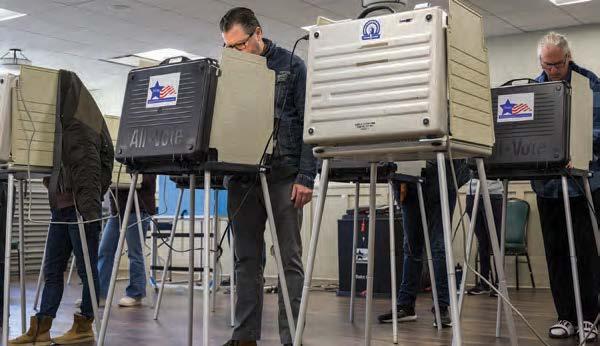










MichaelSilver, Deer eld
United Brotherhood of Carpenters, Chicago
Greenwood Archer Capital, Chicago
Wintrust Financial Corporation, Rosemont
LEGAL
Benesch, Chicago

MichaelSilver proudly announces the appointment of Ryan Lubinski, CPA, CVA, as Partner. With over twelve years of expertise, Ryan has demonstrated pro ciency in delivering accounting, business valuation, compliance, and consulting services to closelyheld businesses. His experience spans various industries, including manufacturing, distribution, logistics, automobile dealerships, and retail. Ryan assumes leadership roles in both the Accounting and Assurance and Business Valuation departments.

First Bank Chicago, Northbrook
First Bank Chicago, one of the ve largest privately held banks in Chicago, proudly announces the promotion of Franki Tran to AVP/Credit Review

Of cer. Franki is responsible for assessing the credit risk, monitoring, and underwriting process of loans in the Commercial Real Estate and Consumer Lending portfolios. In addition, he manages the residential appraisal order and review process. He is a recent graduate of the IBA Future Leaders Alliance. Franki joined the First Bank team in 2012.

Signature Bank, Chicago
Signature Bank is pleased to welcome

Erin Reardon Cohn as Senior Vice President, Commercial Banking. With over two decades of experience, she will drive strategic growth, expand and strengthen client relationships through tailored nancial solutions, and foster community initiatives. Cohn serves as Board Chair of Les Turner ALS Foundation and is currently pursuing a Master of Legal Studies at Washington University School of Law in St. Louis, which she plans to complete in 2025.

CONSTRUCTION
Berglund Construction, Chicago Berglund Construction, an industry-leading building and restoration rm, announced a restructured executive leadership team to align with its growth objectives. These changes re ect the 113-year-old company’s longterm strategic and succession plans. Jeffrey Berglund will become President of Berglund’s Building Division and its rst Chief Growth Of cer. He will oversee all aspects of the Building Division’s operations and direct the rm’s marketing and sales efforts, nationwide.

Gary Perinar has been appointed Second General Vice President of the United Brotherhood of Carpenters of America (UBC), effective March 1. As Second General Vice President, Perinar will help set the agenda for the UBC, the umbrella organization that represents 500,000 skilled union workers throughout North America. Prior to his appointment, Perinar was the Executive Secretary-Treasurer of the Mid-America Carpenters Regional Council. He is a 46-year member of Carpenters Local 174.

LEAP Innovations, Chicago

Scott Frauenheim has been appointed CEO of LEAP Innovations. With a long history of collaboration & proven track record in fostering studentcentered learning & innovation in schools, Frauenheim is wellpositioned to lead LEAP into a new era. LEAP Innovations designs personalized professional learning & coaching for schools, districts, & community groups. LEAP is committed to creating sustainable solutions, grounded in research, that contribute to a more innovative, resilient & inclusive world.

Energy CX, Chicago
Miles Rice has been appointed Co-CEO of Energy CX, a data-driven energy brokerage. As the former COO, Miles brings a strong entrepreneurial background and wealth of experience to this role. Miles will be focusing his efforts on growth and innovation.


Hammes
Scott Hammes will serve alongside Miles as Co-CEO. Since becoming CRO in 2022, Scott’s strategic vision and management has been instrumental in driving growth at the top U.S. energy brokerage. Scott will be honed in on running the day-to-day operations and overall business strategy.
Scott and Miles are committed to continuous innovation and industry transformation. The pair plans to take Energy CX to the next level with new partnerships, customer-focused technology and investments in people.
To order frames or plaques of profiles contact Lauren Melesio at lmelesio@crain.com
Greenwood Archer Capital (GAC), a nonpro t CDFI and subsidiary of Chicago Neighborhood Initiatives, is pleased to welcome Terrence Johnson as Executive Director. He will lead GAC’s mission of making capital that is usually unavailable more accessible to entrepreneurs looking to grow startup and established small businesses in underresourced communities. Terrence joins GAC from the City, where he led the Financial Incentives Underwriting Division of the Department of Planning and Development.


Wintrust Financial Corp., a nancial services holding company based in Rosemont, Illinois, with 175 locations across Illinois, Indiana, and Wisconsin, is pleased to announce the appointment and promotion of two of its leaders. Rhonda

Pokoj

Pokoj took on a new responsibility as Co-Chief Credit Of cer at Wintrust Bank, N.A. Rhonda will specialize with the Middle Market Commercial teams. Rhonda will celebrate 16 years with Wintrust in April.
Rodarte
Joel Rodarte was promoted to SVP, Regional Branch Manager at Wintrust Bank, N.A. Joel will celebrate eight years with Wintrust in April.
Mesirow, Chicago
Reya Complex Laboratory and Mobile Diagnostics, Melrose Park
Hanna Conger has joined Benesch as a Partner in the rm’s Litigation Practice Group. Energy-sector clients rely on Hanna to navigate the regulatory environment. She represents those clients before energy-regulatory commissions and in court and offers sage advice about building grid infrastructure, setting utility rates, and engaging in important transactions.

Conger

Rooney
John E. Rooney has joined Benesch as a Partner in the rm’s Litigation Practice Group. John helps public utilities develop strategies to obtain regulatory approvals and leads litigation before regulatory commissions. He assists utilities with legislative proposals that may impact operations or the regulatory structures that govern them.
LEGAL
Benesch, Chicago

Mesirow announced Brian Price as CEO of Mesirow Wealth Management. In this role, he is responsible for the strategy, growth and market positioning of the rm’s private wealth business. Brian joined Mesirow in 2006 and has subsequently held positions of increasing responsibility and leadership. Since November 2022, he has served as Interim Head of Wealth Management, President and Chief Operating Of cer of Investment Banking, and Head of Advisory Services.
Mesirow, Chicago

Glenn George has been appointed Chief Operating Of cer of Clinical Laboratory and Mobile Diagnostics division at Reya health and wellness. Glenn holds a Doctor of Science from Nova Southeastern University and an MBA from University of Wisconsin Parkside. Glenn also serves as the Medical Laboratory Science Program Director for the University of Wisconsin Parkside and in (KOL) positions industry-wide. Visit reya. net for further information.


Oakley Pontikes
Mesirow recently promoted Adam Oakley and Rocky Pontikes to Co-Heads of Mesirow Investment Banking. In addition to their current responsibilities, they will now provide strategic direction and oversight for the group and manage its day-today operations. They also remain responsible for developing key relationships, leading deal teams throughout the transaction process and providing advisory services on middle-market M&A assignments across their respective sectors. Oakley and Pontikes each have more than 20 years of investment banking experience. Oakley and Pontikes have deep expertise in industries including Aerospace & defense and diversi ed Industrials; and Business Services, Distribution & supply chain, respectively.
Beverly Wright, PhD, CAP joined Wavicle Data Solutions as VP of Data Science and AI, where she will serve as Wavicle’s principal AI evangelist and champion the exploration of emerging data science and AI technologies. Wright is also the University of Georgia’s Academic Program Director for Data Science and AI, a board member for INFORMS Analytics Society and Georgia Tech’s Master of Science in Analytics program, and leader of the Technology Association of Georgia’s Data Science and AI Society.

Prairie Capital Advisors, Chicago

Prairie Capital Advisors, Inc., a leading corporate advisory and investment banking rm, is pleased to announce James (“Jamie”) McQueen as the newest Managing Director in the rm’s investment banking group. Mr. McQueen joins Prairie with over 20 years of Investment Banking experience as he has provided mergers and acquisitions (M&A) and capital advisory services to both public and private companies.
Zachariah J. Snyder has joined Benesch as an Associate in the rm’s Corporate & Securities Practice Group. Zach focuses his practice on complex corporate transactional matters. He represents clients in all stages of numerous transactions, including drafting and negotiating purchase agreements, ancillary documents, and disclosure schedules and conducting buy-side and sell-side due diligence.

Cawley Commercial, a leading commercial brokerage providing advisory services and property management through the Greater Midwest, is pleased to announce the addition of Allison Malzone, Sr. Associate and Mark Wilson, Sr. Vice President to the team.

Malzone Wilson

Malzone joins Cawley with diverse real estate experience, primarily within commercial title and lending. Wilson brings a tenured 35-year career, as the former head of leasing for Stahelin Properties. He was responsible for growth and oversight of a portfolio that amassed 1.2m square feet of of ce, industrial, and land. Mark and Allison are set to join forces with Cawley’s founder, Dan Cawley, as the new team builds off their combined 60-years of commercial real estate experience.

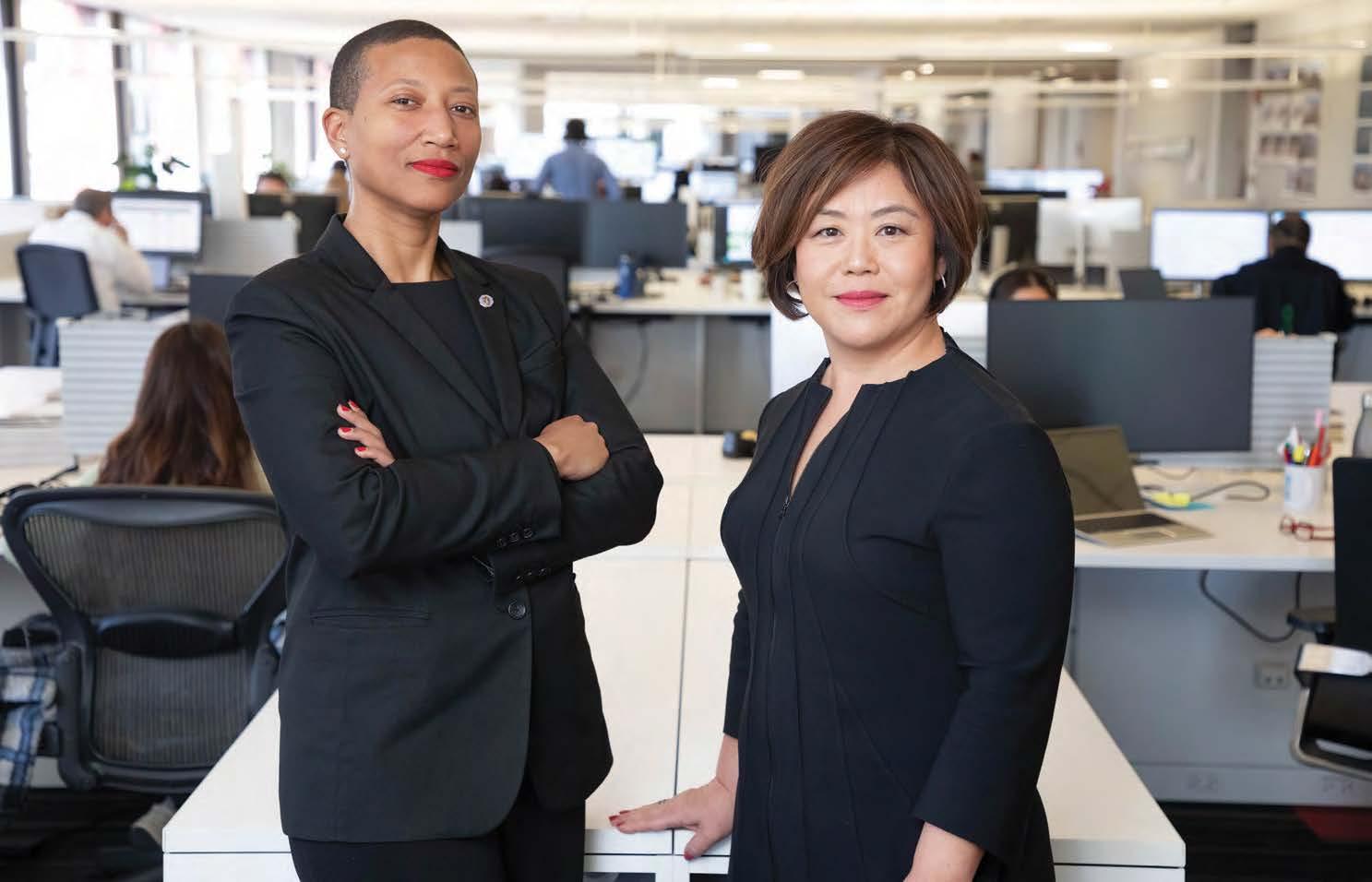
Wall Street, seen as a forecaster of business and economic trends, is retreating on many of the diversity, equity and inclusion, or DEI, initiatives pledged and created in the aftermath of what was called a “racial reckoning” in summer 2020. Programs created to ensure fair treatment and broader representation are under attack across the U.S.
e short list: Billionaire hedge fund manager Bill Ackman has written, “DEI is racist.” Tesla CEO Elon Musk has condemned it. Goldman Sachs Group opened up its “Possibilities Summit” for Black college students to white students, Bloomberg reported. America First Legal, an organization founded by Stephen Miller, a for-
mer adviser to former President Donald Trump, declared that “all DEI programs” are “illegal.” Red states like Florida, Texas and Utah are axing chief diversity o cer positions. In its 10-K ling, Citigroup Inc. dropped mention of anti-racist policies.
Chicago, in the blue state of Illinois, appears for the moment to be bucking that trend. Company representatives who spoke with Crain’s say they remain committed to their e orts designed to address opportunity inequities.
“None of what we’re hearing in the media is really impacting us at all,” says Angelique Gerlock, senior vice president of talent management and DEI director for Byline Bank. “We are moving forward. Our board of directors is very

much committed to D E and I.”
But a wholesale end of e orts to close the racial wealth, academic achievement, health and other gaps that stymie the progress of Black Americans is a troubling prospect for Kimberly Dowell, a principal with global architecture and engineering
rm HOK.
Only the 295th Black woman to become an architect in the U.S., Dowdell remembers the conversations around diversity and inclusion change in 2020. People from many backgrounds were onboard demanding equity. en came last year’s U.S. Supreme Court decision striking down a rmative action in colleges, which
See DEI on Page 14

| By Cassandra West
“Companies are realizing that the demographics are what they are. The world is increasingly diverse. And call it what they need to call it, but they can’t just do nothing about it.”
Bernadette Smith, founder and CEO of The Equality Institute
From Page 13
“(raised) all these questions about the sustainability of DEI policies,” Dowdell says. “It’s really disturbing how quickly the pendulum is shifting back toward a less inclusive and diverse society.”
When members of the Corporate Coalition of Chicago met in November to “talk about the politicization of DEI and how that’s a ecting people,” says Managing Director Brian Fabes, “none of them have backed away from their commitments. Many of them are expanding the work.”
Still, Chicago businesses are not immune to the latest culture battle. Crain’s reported last month that United Airlines is at the center of a debate over DEI policies that’s expected only to intensify as presidential politics heats up before the November election. A ruling this month by a federal judge in Texas ordered the Minority Business Development Agency, housed within the U.S. Commerce Department and created to help minorityowned businesses, to open its doors to all races. e ruling could have implications across the country. And on March 12, a white male DePaul University sued the Chicago Bears, alleging the organization “engaged in intentional race and sex discrimination … depriving plainti of his rights to contract on the basis of his race.”
At HOK, Dowdell co-chairs the Diversity Advisory Council, which ensures that the rm is “fostering a sense of belonging.” HOK, she says, has almost built-in diversity because the founders were not all white men. One founder, Gyo Obata, was Japanese. “Basically, the HOK ethos is about diversity and its multiple forms in terms of its people, but also the work and the kinds of work that we do. ose kinds of founding principles are maintained.”
Rana Lee, a Crain’s Notable Leader in DEI who leads business development for HOK’s Chicago studio, says DEI is part of the architecture rm’s ESG priorities and gets sponsorship at the highest level of the organization. e noise and backlash surrounding DEI “hasn’t changed our commitment to good business.”
Shifting views over time
DEI has roots in the civil rights movement of the 1960s that led to federal legislation like the Equal Pay Act of 1963 and Title VII of the Civil Rights Act of 1964. C-suites made room for chief diversity o cer positions. Universities created DEI departments and gave them budgets.
Over time, business leaders came to see diversity as good for the bottom line, making the business case clear. A McKinsey study showed culturally diverse companies are 36% more pro table. DEI “greatly enhances our ability to serve clients,” Corey McQuade, managing partner of nancial services company Northwestern Mutual, told Crain’s.
But the 360-turn on DEI has some likening its brief moment in

Business leaders’ opinions on diversity initiatives based on their political af liations In three years, where do you expect diversity initiatives to rank among your company’s priorities?
More important than today About the same importance as today Less important than today
Business leaders Business leaders (liberal) Business leaders (moderate)
Business leaders (conservative)
Source: Morning Consult, January 2024
When asked which actions have been taken by their companies following the June 2023 decision by the U.S. Supreme Court on af rmative action, executives said they:
Increased overall commitment to diversity as a corporate objective
Launched a program, project or initiative
Changed language and how we communicate about our diversity commitments
Reduced overall commitment to diversity as a corporate objective
Discontinued or modi ed a training program
Terminated a program, project or initiative
Source: Morning Consult, January 2024
the sun to the post-Civil War Reconstruction era, when the U.S. attempted to integrate formerly enslaved African Americans into social, political and economic systems. “Reconstruction was a solu-
tion to the fact that African Americans were inhumanely treated,” says Reginald Bell, assistant professor of strategic communication and public relations at Monmouth College. “As I think about this
ginning in summer 2020. Most of Chicago’s largest companies posted statements and pledges devoted to diversity and equity on their websites. Banks committed to increased lending in underserved communities. One website even listed examples of awesome diversity statements on Fortune magazine’s 100 Best Workplaces for Diversity list.
Crain’s asked several Chicago companies to comment on how they’re managing DEI. Responses received included, “we are unable to assist with your story” and “(h)oping to let our new Chief Diversity O cer settle in her role a bit longer before engaging in external opportunities with media.”
Such responses re ect “this unfortunate political time,” says Fabes of the Corporate Coalition. Some companies don’t want to talk “when they have to be conscious about the words they use.”
“ is whole topic is unfortunate and not helpful,” he says. “Crain’s has documented lots of ways that inequities are a drag on the region’s economy, that keep businesses from getting the talent, from tapping the full talent in the region. To do that, to make those kinds of changes that will grow our region, that will help companies tap the talent they need, DEI strategies are one way to do it.”
e impact of DEI strategies isn’t lost on Space Continuum, a Chicago commercial furniture dealer in business for more than 40 years. “DEI embodies the essence of equal opportunity, providing platforms for companies like ours to showcase our talents and skills,” says Joshua Johnson, vice president of business development. “We are talented and have valuable skills to win these contracts. ey aren’t just giving opportunities because we are Black. We bring value and expertise.”
In 2021, 25 companies in Chicago formed the 5/25 Move to Action to galvanize corporate commitments on racial equity. In 2022, the companies co-leading that joint venture with support from e Chicago Community Trust conducted a survey to gauge progress. Six companies reported taking actions to grow diverse supplier spending; ve invested in local community development and capacity building; eight were focused on inclusive workforce strategies and providing equitable access to internal, high-quality opportunities that reduce income and wealth disparities; and ve took internal actions to shift culture, such as changes to board engagement on DEI, mission and vision, the survey found.
Now, four years after DEI was declared a priority, those committed to staying the course say diversity is a fact that isn’t going away.
whole season of the aftermath of George Floyd and DEI . . . it feels the same way. Reconstruction lasted 12 years. DEI got only about a three-year run.” at run took o like wild re be-
“Companies are realizing that the demographics are what they are,” says Bernadette Smith, founder and CEO of e Equality Institute, a rm that helps organizations ful ll their diversity missions. “ e world is increasingly diverse. And call it what they need to call it, but they can’t just do nothing about it.”

By the time Watchen Nyanue graduated from DePauw University in Indiana, she had completed eight corporate internships, racked up lots of networking experience and been mentored by women in high-level positions. When she began her career, she assumed her peers had similar experiences. She soon learned that wasn’t the case.
“I took for granted a lot of the things that people who look like me didn’t have, and so I would say ignorant things,” Nyanue says. “I would have a girlfriend complain about her boss, and I would say, ‘Just call your mentor, they’ll get you a new job.’ “
Acknowledging her ignorance led her to start I Choose the Ladder, a boutique consulting rm in Chicago that helps corporations develop and retain female talent. “My company came into existence recognizing my own privilege,” says Nyanue. “But originally, it was a podcast to help other women who looked like me, who wanted to have corporate jobs learn how to navigate that space.”
Nyanue calls herself a talent management strategist. She helps women, primarily Black women, navigate corporate America, and companies like Nike, Best Buy and McDonald’s to rede ne what a more inclusive workforce means. I Choose the Ladder boasts of increasing employee satisfaction and equipping over 10,000 clients with the tools and research needed to enhance their careers.
Nyanue’s business was doing well. en that changed. Salvos against business initiatives devoted to diversity, equity and inclusion, or DEI, quickly followed the U.S. Supreme Court’s June deci-
sion striking down a rmative action admissions policies in higher education. ose who do the kind of work Nyanue does quickly felt the e ects.
Last year “was probably one of the worst years in business for us,” Nyanue says. She attributes some to budget cuts by clients but also to the pushback on diversity, equity and inclusion.
Expenditures on DEI initiatives are often the rst to be trimmed, she says. Reports bear that out.
Last year, many companies that had championed diversity and equity a few years ago began laying o DEI sta ers and leaders of diverse employee resource groups and slashed budgets for external DEI groups by as much as 90%, according to CNBC. I Choose e Ladder began taking on clients in 2020, the same year that companies in nearly every industry pledged commitments to diversity after the murders of Breonna Taylor and George Floyd by police o cers and the public protests that followed. “We got so many pitches and people calling (to ask), ‘Can you speak here? Can you do this?’ ” says Nyanue. Her business revenue rose 1,000%. But then it fell 75% year over year from 2022 to 2023. Her experience is echoed by others in the DEI consulting industry. Xavier Ramey, CEO of Chicago-based social impact consulting rm Justice Informed, saw demand for his services increase when DEI was a favored term in corporate suites. Requests for services went up almost 800% in 2020, he says. “Where we’re at now is kind of consistent.” He reorganized his company last year, anticipating a decrease in demand for DEI.
ough it led to an increase in
business, the move to capitalize o the DEI trend led to what some say was “insincerity” within the scope of the work, as new DEI businesses popped up to address companies’ needs during the time of racial reckoning. Ti any Hudson, co-founder of e Nova Collective, a Chicago consultancy in DEI strategy and training programs, says that as the DEI consulting eld became more crowded, those who may have been ill-equipped to lead on the e ort ended up doing more harm than good. But Hudson believes “DEI fatigue” has weeded out those who didn’t truly want to nd longterm solutions. Nova Collective co-founder Brynne Hovde says, “Our work has gotten more impactful in the last couple of years more than anything else. ere were folks responding to a moment under pressure, and that pressure fades.”
at fading pressure has many DEI consultants pivoting in the face of the backlash. Hovde points to the fact that attacks on diversity and equity initiatives are not new and adjusting to the times and “social conversation” has always been at the forefront of the work she and Hudson do.
Rob Wilson, president at Employco USA, a Westmont-based national employment solutions rm, says that over the past three to four months, companies they work with want to move from measuring diversity to instead “ nding the best person for the job.” He adds that moving away from “divisive language” will make all the di erence.
“Diversity is not going away at all. Companies are still going to highlight the diversity of their em-
ployees within their organization,” says Wilson. “You’ll still see them talk about that in their hiring process, of having a diverse workforce. It’s race, it’s color, it’s sex. It’s not one thing. We’re a diverse workforce and everybody’s welcome.”
Justice Informed’s Ramey says the pivot is understandable but warns of the dangers of not measuring equity e orts. “What people are saying is, ‘Hey, we’re being attacked because we are setting goals, writing them on paper and declaring them to the world. And so, how about we try to do this work, but let’s just not set goals.’ . . . e reality is that the (business) mantra often is what gets measured gets done. e problem is, if the law is now attacking being able to measure something, we know it won’t get done.”
e incentive for having a diverse workforce can be seen in the business case and company performance, a McKinsey report shows.
Organizations “in the top quartile for board-gender diversity are 27 percent more likely to outperform nancially than those in the bottom quartile,” according to the study, which also showed that companies with more ethnically diverse boards are 13% more likely to outperform those that are less diverse.
e data con rms that the work Nyanue is doing to create more opportunities has value. I Choose the Ladder is retaining clients who are committed for the long haul, she says. Conversations among her sta have shifted to creating awareness and programs to target high school students, preparing them for careers in the corporate workplace.
Added programming for “emerg-
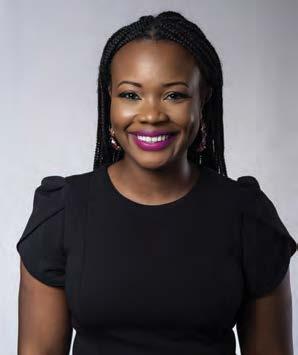
ing leaders” is how Gail Arrigo, executive vice president of Chicago United, says the corporate membership organization is staying ahead amid pushback.
“ ose (programs) have helped us not just engage people that are managing diverse teams, but engage young, diverse individuals that are climbing through their careers and help them understand how to navigate corporate culture, understand cross-cultural communication, building a culture of collaboration within organizations and how to advance . . . building their blueprint for their leadership career,” Arrigo says.
In the current hostile environment, Nyanue remains committed. As the DEI sector adjusts, she’s going to be exible in providing the solutions her clients need.
“For us, it’s about how we make sure that the work that we’re doing is tied to the business objectives,” Nyanue says. “How does the work that we do with their people and their culture and their leaders help them better meet that bottom line objective, and be able to explain that in a way we can sell and that people are receptive to?”
Many feared the Supreme Court’s 2023 decision to end race-based a rmative action in higher education would trickle down to the workplace and create a DEI backlash. Anecdotal and concrete evidence shows mixed fallout: Some rms have revised or deprioritized their diversity, equity and inclusion initiatives or taken them under the radar, while others have doubled down on them. A recent national survey was positive, nding that 82% of business leaders consider diversity initiatives critical to their business plans.
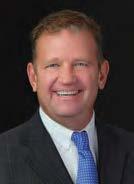
Tom Dakich is CEO of Quantum Corridor, a technology and network communications company based in Indianapolis and Chicago.
A raft of studies show it is irrational to scrap workplace DEI initiatives. Diverse workforces offer businesses incomparable competitive advantages by driving growth, innovation and profitability; increasing retention, and even reducing risk. But what we should be talking about is the most determinative diversity issue facing businesses now —
building a highly skilled, diverse workforce and talent pipeline. is is critical if the U.S. and especially Chicago want to remain competitive. Our country has already fallen from the highest-ranked nation in the 2000 IMD World Competitiveness Ranking to ninth in 2023. With its employment growth and in-migration decelerating faster than the rest of the nation, the Chicago metropolitan region’s competitiveness is compromised, too. And severe labor shortages nationally and locally show no signs of abating in the next decade.
A diverse workforce and talent pipeline can be built many ways, but the most effective and equitable way is to focus on those who are underemployed, untrained or excluded from the workforce. Many are Americans who lack access to high-speed internet — at least 42 million, according to Broadband Now data.
Those who lack low-cost, reliable broadband options are
more often low-income and minority and live in underserved or rural communities. Without high-speed internet, they have limited to no access to employment, education and health care information and opportunities. Students facing the digital divide can’t do their homework or participate in remote-learning opportunities.
Diverse
workforces offer businesses incomparable competitive advantages.
Yet achieving digital equity is an enormous mission, especially in underserved areas. The “offramps” that allow them to connect to broadband highways cost millions and are a local municipality expense.
In northeastern Illinois, a seven-county region, 66% of Black households have broadband connectivity, compared to 78% of white residents, a figure that drops to 58% for all households earning less than $20,000.
In about half of Indiana’s counties no more than 22% of house -
holds actually have high-speed internet access.
ese issues inspired Quantum Corridor, a 172-mile-long beroptic network that will have capabilities for quantum computing for regional businesses and institutions, and high-speed broadband for municipalities along its path — a route that goes from Chicago’s Near South Side to Purdue University’s Northwest campus. Enterprises on Quantum Corridor’s path, which includes many major research institutions, will be able use quantum computing to achieve breakthroughs in defense, biotech, cybersecurity, machine learning and more. e many communities it crosses, including 17 sizeable municipalities, all with little to no high-speed internet, will be able to tap into this network for their residents.
When the private market fails to supply affordable access to a critical necessity, communities must step in to fill the gap. While Quantum Corridor is a public-private partnership funded by grants from the Infrastructure Investment & Jobs Act, the state of Indiana, Indiana READI and
Last July, after a Supreme Court decision ended a rmative action, Forbes wondered whether corporate DEI e orts would be diminished or change. By January, stories were predicting a DEI death knell with headlines like “DEI e orts are under siege” from CNN, “Facing Backlash, Some Corporate Leaders Go ‘Under the Radar’ With D.E.I.” from the New York Times, and “As DEI efforts come under legal attack, companies quietly alter their programs” from the Associated Press.
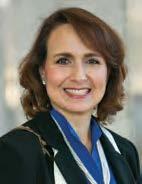
porate diversity. While all DEI e orts aren’t created equal — performative allyship and nebulous corporate diversity programs without clear goals often zzle out — data show that the benets of meaningful diversity and inclusion are undeniable.
The best DEI initiatives endeavor to solve a problem. Savvy businesses use data to objectively assess their strengths and weaknesses on the diversity and inclusion front, identify gaps and create specific, measurable and attainable goals.
Yet a new study from the Public Private Strategies Institute shows that an overwhelming majority of business leaders — some 82% — are so committed to DEI e orts that they will not be abandoned, despite some legal challenges to corporations stemming from anti-DEI lawsuits. Instead, companies will nd new and e ective ways to nurture and sustain cor-
One effective strategy business leaders can embrace is to recommit to the basics: relationshipbuilding through intentional networking.
We can’t choose our colleagues, but we can control the depth and breadth of our networks. Deliberately expanding one’s professional network to include people from di erent in-
dustries and of varied ages, racial and ethnic groups, socioeconomic backgrounds, abilities and interests can lead to powerful connections — connections that, say, hiring managers can leverage to organically diversify their talent pools. It’s grating, not to mention dishonest, when companies claim they couldn’t nd any diverse candidates for open roles. In reality, the folks in charge of hiring didn’t look beyond their small circle and didn’t network with enough intention.
Despite DEI backlash, companies would be wise to stay the course.
Simply knowing more people is not the answer. Relationships should be meaningful, not shallow or transactional. Joining mentoring programs, staying in regular contact with new connections, attending more conferences and industry events and generally taking an authentic interest in other people can lead to more fruitful and

private entities, its success in reaching underserved populations will depend on municipalities. They must raise funds for off-ramps, a large expenditure but one that will yield exponential returns for decades.
Hammond's and Gary's mayors are engaged in fundraising efforts to build the off-ramps. Others are coming on board to form a Mayor’s Council for Digital Equity to include all contiguous municipalities along the
inclusive networking. While networking helps cultivate relationships across workplaces, a nity groups, also known as employee resource groups (ERGs), are a potent tool for intrao ce community building. A nity groups strengthen the connective tissue between co-workers by providing a welcoming space for open dialogue and knowledgesharing, encouraging mentorship and driving collective action. ERGs can promote engagement, camaraderie, productivity and job satisfaction and contribute to a more inclusive company culture.
Affinity groups also feed a core human need — a sense of belonging — at minimal cost to businesses. A 2023 American Psychological Association survey found that 94% of respondents reported that it’s somewhat or very important that their workplace is somewhere they feel they belong. When that sense of belonging is absent, employee engagement may decline.
At e Chicago Network, an organization of in uential women

leaders throughout Chicagoland, we see daily proof of the power of intentional networking and belonging. Members represent 11 professional sectors and support each other workwise and personally, helping one another secure jobs, board seats and other opportunities. rough our organization, itself an a nity group, diverse connections develop organically and deepen over time.
Despite DEI backlash, compa -

route. This council is intended to help communities take advantage of opportunity and bridge the digital divide.
When completed in early 2025, Quantum Corridor will be the first project in the nation to offer public and private enterprises and underserved communities a frontline fiber
network that can benefit both.
Given the benefits diversity can bring to local economies, and the potential of high-speed fiber-optic networks to harness the power of inclusion, we hope this project inspires others. Those who choose to ignore diversity and inclusion will ultimately be left behind.

nies would be wise to stay the course. Beyond the business case and moral case for diversity and inclusion in the workplace, companies can and must reflect our fast-changing world. America is becoming more diverse: Updated U.S. Census Bureau data show that nonHispanic white people will be less than 50% of our nation’s population by 2045 — a trend that will continue as white pop -
For the past year, I have been interviewing Florida graduate students participating in a federally funded program to increase diversity in STEM elds. Many of the students, particularly those who identify as LGBTQ+, are deeply concerned about antiLGTBQ+ legislation. ose that are parents are afraid for their children’s wellbeing and safety. As students and faculty in Florida have protested legislation that targets diversity, equity and inclusion (DEI) e orts and institutional autonomy, university administrators have remained largely silent.

Alexios RosarioMoore is a visiting assistant professor at Northern Illinois University and collaborator with Envisioning Equity.
As a professor of leadership ethics and a practitioner of justice, equity, diversity and inclusion (JEDI)-based organizational change, I am disturbed by the lack of moral leadership and troubled by state-sponsored attacks on DEI programming and practices. Unfortunately, DEI opponents are well-funded and emboldened by a U.S. Supreme Court that has continued to whittle away our hardwon civil rights. While Chicago may be relatively insulated by a progressive governor and mayor, the national decline in DEI job postings demonstrates that all politics may not, in fact, be local.
Scholars of the history of jurisprudence have observed that the political and social climate in uences Supreme Court decisions, even as the court’s decisions shape policy and practice.
After the Students for Fair Admissions v. Harvard decision limited race-conscious admissions policies, I received several fundraising emails from non-pro t and philanthropic organizations, decrying the end of a rmative action. Unfortunately, a rmative action had already been smothered by 40 years of Supreme Court jurisprudence. Its original rationale — to x or compensate for current or historical discrimination — was replaced by the benets of diversity back in the '80s.
justing to the actual legal implications of the SFFA v. Harvard decision. Similarly, racial justice and equity remains a central commitment for local foundations.
Builders Vision, an impact platform headquartered here in Chicago, does both climate philanthropy and investing and continues to fund programs that help advance racial equity. e MacArthur Foundation has provided moral and legal guidance for the philanthropic eld, as funders work to ensure their grantees' progress toward their goals of racial equity and justice.
Given these conditions, what is the role of JEDI practitioners? We must continue to engage with organizational partners authentically rather than performatively, to draw on evidence-based practices and community knowledge, while supporting the institutionalization of policies that promote racial equity and combat fearmongering. Chicago is both vibrant and resilient, but the legacy of segregation and marginalization persists.
In a televised speech promoting the Civil Rights Act, President John F. Kennedy described racial equity as both a legal and a moral issue, proclaiming that “those who act boldly are recognizing
We can transcend the city’s history of segregation and factionalism, and resist attempts to roll back the progress that we have fought so hard for over so many years.
right as well as reality.”
While Chicago may be relatively insulated from state-sponsored attacks on civil rights, the national campaign against civil rights is well-funded and coordinated. In the coming years, leaders of philanthropic organizations and universities will be confronted with intractable moral decisions, to calculate risk versus rewards, particularly as they face political or nancial pressures.
If the current response is a predictor of future decision-making, I am optimistic that local universities and philanthropies recognize their moral charge as they combat racial inequity and protect civil rights. We can transcend the city’s history of segregation and factionalism, and resist attempts to roll back the progress that we have fought so hard for over so many years.
ulations decline in younger and middle-age groups, the Brookings Institution noted.
As business leaders consider the best way forward for corporate diversity, DEI programs may be reshaped, renamed or entirely reimagined, but they shouldn’t be discontinued. DEI boils down to collaboration, connection and inclusion — powerful forces for both business pro tability and public good.
Could any of the activists who fought for the passage of the Civil Rights Act imagine that one day a “civil rights legal group,” supported by donor-advised funds, might undo their good work with the law’s own tools? Truly, we live in a time of bone-chilling moral contradiction.
Perhaps then, it is no surprise that some universities and philanthropies have scaled back or reframed racial justice programming, even as others have redoubled their commitment to addressing the harms caused by systemic racism. Illinois state universities have remained committed to the DEI policies and programs, while ad-

Nina Longino was deeply worried and devastated for her students following the U.S. Supreme Court’s ruling that limited the use of race as a factor in admissions decisions, e ectively ending a rmative action.
Longino, executive director of Chicago’s iMentor, a program that works with high school students preparing for college on the city’s South and West sides, knew the decision would only make it more di cult for students who live in the city’s most disinvested neighborhoods to get into the college of their dreams.
“I have deep concerns,” she says. “It’s yet another barrier for Black and Brown, low-income and rstgeneration students to have to surmount on their pathway to college success.”
After the Supreme Court struck down race-conscious admissions policies last summer, a re-energized assault on diversity, equity and inclusion practices across the country kicked o , from classrooms to the C-suites. e ruling, which is reshaping the college admissions process, is expected to have the biggest impact on the country’s most selective schools, where student bodies are historically less diverse and admissions are hyper-competitive.
“ e biggest racial gaps are at the top of higher education, the most elite schools,” says Alvin Tillery Jr., a professor of political science and director of Northwestern University's Center for the Study of Diversity & Democracy. “We could probably lose somewhere between 35% to 45% of Black and Latino students at the truly elite colleges.”
Now, one year after the ruling, Longino’s students and other
| By Brandon Dupré
and access in higher education.
“A rmative action is one of the tools that is involved in the rectication of extremely persistent inequalities, whose historical origins are all well understood,” says Steven Durlauf, director of the Stone Center for Research on Wealth Inequality and Mobility at the University of Chicago Harris
“The biggest racial gaps are at the top of higher education, the most elite schools. We could probably lose somewhere between 35% to 45% of Black and Latino students at the truly elite colleges.”
Alvin Tillery Jr., a professor of political science and director of Northwestern University’s Center for the Study of Diversity & Democracy
Black and Latino seniors across Chicago and the country are navigating an uncertain admissions process as colleges race to implement new protocols that aim to thread the needle of maintaining diversity in their freshman classes while not overstepping the high court’s ruling. As the colleges respond, higher education braces for what many expect to be a sharp decline in diversity.
While nine states had already banned a rmative action prior to the SCOTUS ruling, the vast majority of colleges and universities, including those in Illinois, used it as part of an admissions process that aimed to expand racial diversity
School of Public Policy. “ is is a huge blow to these e orts and will be consequential.”
In an amicus brief led before the ruling, lawyers representing universities said achieving racial diversity is virtually impossible at highly selective universities in the absence of a rmative action, with the number of “underrepresented minority students” falling precipitously in states where bans took e ect.
e brief noted that in Michigan, which banned a rmative action in 2006, its agship public school, the University of Michigan, had experienced a “marked and sustained drop” in diversity: Black and Native American students' “enrollment has fallen by 44% and 90%, respectively.”
Complicating matters, colleges were a orded little time to ramp up alternative strategies following the June ruling before fall admissions began rolling in. “One of the biggest issues was just how quick the turnaround was,” says Doug Burgett, interim director of undergraduate admissions at the University of Illinois Urbana-Champaign. “ e ruling came down and we had to quickly pivot and make adjustments.”
Northwestern University, the University of Chicago and U of I Urbana-Champaign all stand to see the biggest drops in diversity as the three highest-ranked schools in the state. All three have rea rmed the importance of diversity to their campuses and vowed to continue to make e orts through recruitment, along with other tools such as a holistic application process, to prevent a precipitous drop in diversity.
But political groups will certainly be watching for any missteps as conservative organizations continue to wage war against DEI efforts around the country. Any perceived maneuvering around the SCOTUS ruling will likely bring with it ligation, which admissions departments are vigilant of.
“We’re aware that these outside groups will be watching our every move,” acknowledged Burgett, “but we don’t want that to paralyze us from achieving our goal, which is a diverse student body.”
Recently, billionaires like Elon Musk and hedge-fund manager Bill Ackman, who spearheaded the ousting of Harvard University
President Claudine Gay, have taken to X, formerly known as Twitter, to critique college policies and deride DEI practices.
“ e goal of this right-wing movement, particularly someone like Elon, is to just end the government's consideration of our past as a racial caste system,” says Tillery, who views the SCOTUS decision on a rmative action as a major in ection point in the backlash against DEI.
“ ey’ve won at universities and will continue to undermine DEI e orts there, but the bigger game has always been corporate America,” he says.
Kairy Muñoz, a senior at NorthGrand High School on the city’s West Side, wondered how the SCOTUS ruling would impact her ability to get into her dream school, Columbia University. She also worried that the new admissions process wouldn't accurately capture what she had to overcome personally and academically.
“I felt like I was losing a part of me,” Muñoz, a rst-generation college student whose family immigrated from Mexico, says. “You’re taking away my family’s history and what I've become.”
Admissions advisers across the city are also grappling with how to best serve their students' needs in this new educational landscape. With colleges responding to the ruling in a piecemeal way, it’s hard to get a sense of what schools want, says Janice Jackson, CEO of Hope
Chicago, a nonpro t that supports high school students from disinvested city neighborhoods in preparing for college and provides scholarships for its students.
“People are unclear about how to interpret the SCOTUS ruling, and we aren’t sure about how colleges will respond or what they will look for and emphasize now,” says Jackson. “And if you come from an environment where college admissions already felt like a pretty daunting process — maybe you’re the rst in your family doing it — this only compounds your confusion and may act as yet another barrier.”
Jackson expects the ruling will have a “domino e ect” on access across higher education. As the top schools see a decrease in diversity, it will only make the second tier of Illinois universities more competitive and di cult to get into for students of color.
Academic advisers who spoke with Crain’s say they’ve really leaned into emphasizing the personal essay this application cycle, giving students the opportunity to speak about their background and upbringing if they so choose. But the advisers have also stressed that beyond that remains a great unknown.
“We’re in the ght for our lives right now to make college accessible and a ordable for students,” Jackson says. “If we don't gure out those two things, I think we're going to have a problem with the college enrollment and completion for Black, Latino and lowincome students.”
Dog owners around Chicago can rent private swimming pools, agility centers and fenced-in backyards for off-leash exercise
From private swimming pools to agility centers, dog owners in Chicago have new ways to get their furry friends o -leash exercise in and around the city.
Dog owners can now book private play spaces for their pets through Sni spot, an online listing platform that markets itself as the “Airbnb for dog parks.” e website has more than 15,000 listings that range from small urban backyards to vast elds that span hundreds of acres.
e concept is simple: hosts list their properties with details about fencing, amenities and pricing, and guests book the spaces by the hour. Hosts set the prices with most listings ranging from about $5 to $15 per hour per dog, and guests are responsible for all clean up.
e value proposition for dog owners, as Sni spot CEO David Adams sells it, is safety.
“Dogs need o -leash exercise, but it’s really not safe to have oleash dogs in public parks,” he
said. Dog parks also have their own drawbacks, he warned, with risks of aggressive behavior and potential disease transmission. “ e reason people pay to use Sni spot versus going to a free park is because it’s safe. People want safety and they’re willing to pay for it.”
Adams founded Sni spot in Seattle in 2018 after struggling to nd o -leash exercise spots in the city for his own dog. He originally envisioned the spaces more as melting pots for like-minded dog owners, but the demand for private bookings has proven much stronger.
“ ey want to book the space without other people or dogs there,” he said.
Demand for Sni spot blossomed during the pandemic, when some cities closed public dog parks and a fresh swath of people became rst-time dog owners amid the “pandemic pets” trend. Now, more than 100,000 guests have booked through Snispot, according to the company, which has about 10 employees.

Adams said he has found that most folks use Sni spot not as an alternative to backyards but rather a supplement to them. “Seventy percent of our guests have their own yards at home,” he said.
“Sni spot is not a yard replacement, it’s actually a walk replace-
ment. It’s just way better to go to a Sni spot for both you and your dog than to go on a walk.”
at’s in part because Sni spot locations go beyond simple backyards. Some span hundreds of acres. Others include lake, river and hiking trail access. ere are
even some indoor Sni spot spaces that are particularly appealing during inclement weather.
“Anything you can imagine, you can have these great experiences with your dog that really weren’t possible before Snispot,” Adams said.




From Page 1
rants have surpassed pre-pandemic levels, according to data from market research rm Technomic. At ne-dining restaurants nationwide, the share of late-night ordering increased to 3.1% last year from 0.8% in 2019.
To capture the increased demand, restaurants are pushing their hours later, rolling out latenight dining experiences and launching happy hours that irt with midnight.





John’s Food & Wine, which opened in October, has launched a late-night happy hour that runs from 9:30 to 11 p.m. It has deals like a martini and beef-fat fries for $20.
“ is is something we’ve noticed a demand for, especially on the weekends,” says Rogers, a co-owner in the business. “We didn’t want to get caught closed too early.”
Fast-food restaurants around the country started noticing the trend last year, when chains like Wendy’s saw sales boosts late at night. Now Chicago restaurants want to give people a late-night option beyond a drive-thru, and it’s a push coming from new and established restaurants alike.
e new dining patterns are a welcome switch from the days of cautious post-lockdown reopenings.
“It was a scary time. We noticed diners were eating at 6 o’clock, 7 o’clock, and all of the sudden, it was quiet,” says Ade. “I’m not saying COVID is 100% behind us, but people are realizing that it’s safe to go out.”
Customer expectations on when it’s acceptable to eat at a restaurant are shifting later, says Huy Do, research and insights manager at market research rm Datassential.
irty-six percent of restaurants nationwide that responded to a recent Datassential survey are open for business late at night. Eleven percent have added late-night hours since opening.
No Vacancy owner Keegan Moon has been hoping this moment would come. e River North restaurant’s kitchen is open until 11 p.m. seven days a week. Moon says when he opened No Vacancy early last year, industry colleagues told him the late hours would be a money-losing move.
head in supply and labor costs. If customers don’t show up as expected, restaurants, which operate on thin margins, lose pro t. Sixty- ve percent of restaurants open for late-night hours are worried about sta ng and labor, and 36% are worried about accurately predicting customer turnout, according to Datassential.
To combat those risks, restaurants are o ering limited menus later at night. at can help cut down on kitchen sta and ease the supply guessing game.
When Bronzeville Winery extends its hours later into the evening this summer, it will do so with an edited menu, says co-owner Eric Williams. e menu change will t with the mood shift Williams wants to create: a sort of after-hours lounge feel he says is di cult to nd on the South Side.
“(It’s) smaller bites, it’s lower music, it’s lower lights and it’s just chilling,” he says. “It’s this really kind of cool vibe.”
Some owners say they can keep their restaurants open later in part because the post-lockdown labor shortage is easing. Also, getting customers to stick around adds another opportunity to make money.







Cariño, a 20-seat Uptown restaurant that opened in late December with a Latin Americaninspired tasting menu, switches its chef’s counter to a service it calls “taco omakase” at 10 p.m. e $125 chef-dictated menu also includes three half-cocktails or three half-pours of wine.
“Everybody said I was stupid,” he says. “ ey were like, ‘You’re really, on a Sunday night in February, going to keep your kitchen open?’ I was like, ‘Yeah, absolutely.’ I want to be that place just because that place doesn’t exist anymore.”
“We want to keep people until the end,” says Jared Galbut, CEO and co-founder of Bodega Taqueria y Tequila. e restaurant is launching a “Reverse Happy Hour” at its River North and West Loop locations, which runs from 11 p.m. to closing time in the wee hours.


In the West Loop, 19-year-old Carnivale is seeing an overall boost in pro tability as dinner reservations start to stretch past 10 p.m.
Consistent hours paying off e consistent hours are paying o for No Vacancy. Half of the restaurant’s business comes from transactions made after 9 p.m. And these patrons aren’t just drinking, they’re ordering full meals. Another sign demand is there: About 90% of the calls the restaurant receives are inquiries about whether the kitchen is still open.
Moon rst noticed the latenight uptick last summer, when families were coming in with children for a sit-down dinner after street festivals ended. Moon plans to push the kitchen hours back until midnight when the weather warms up.
Restaurants have been focusing on adding revenue streams since the pandemic eliminated their main source of income: dine-in sales. Late-night provides such an opportunity, particularly if the revenue stream is focused on a higher-margin item, such as alcohol.






A few blocks away in Fulton Market, Sushi By Bou has o ered a 10 p.m. seating since it opened that location in November 2022, though there wasn’t much action. Now it’s considering adding an 11 p.m. seating, says Otto Ade, director of business development for the restaurant’s parent company. And it’s turning its 10 p.m. slot into a “vinyl hour,” where guests can be their own DJ.
Extending hours and o ering promotions comes with risks, especially in the early days. Staying open late adds additional over-
West Loop Japanese restaurant Komo, for example, is adding a concept in its basement called shogun, which will sell small bites, desserts and rare Japanese whiskeys to an after-dinner crowd. “ e pro t margins are better,” says owner Nils Westlind. “It allows you to survive and have a longer shelf-life in an industry that’s cut-throat.”















From Page 3
their cards over the past decade. The bureau also said high levels of concentration in the industry have limited customer’s ability to find cheaper alternatives in the credit card industry.
“The biggest issue is that Capital One is essentially buying one of their biggest competitors,” Silvia said. “The credit card issuers are fewer. Is having fewer credit card issuers good or bad? Are the prices going to be competitive and go down for the consumers?”
Capital One’s lawyers should focus on their track record of customer service, rather than promising to lower rates, as that move would limit the moves they can make if the deal closes, Silvia added.
But one of the best ways for Discover and Capital One to compete with their bigger rivals would be to cut those rates, which it will only be able to af-
From Page 3
affordable housing hasn’t been happening” in their communities, Schechter said.
e changes come as the state enters a new ve-year cycle, during which the Illinois Housing Development Authority monitors the improvements e orts of communities where less than 10% of the housing stock meets a ordability standards.
The watch list published in January includes 44 Chicagoarea communities.
At the top, the town with the smallest supply of affordable housing is Kildeer, a village in southwest Lake County where, according to IHDA, 0.4% of the 1,317 residential units are affordable. In the past year, 115 homes have sold in Kildeer, averaging $683,740, according to Redfin, an online real estate
From Page 3
billion in earnings, the city’s economic development arm said.
This trails behind 183 such decisions in 2022, but “the city’s resilience remains a driving force,” WBC’s report said. “Growth in key industries, sustained capital investments, and O’Hare International Airport’s continued prominence in trade contribute to a positive outlook for 2024.”
WBC highlighted notable business expansions and openings last year, including the Chan Zuckerberg Biohub Chicago, a $275 million biomedical research hub in Fulton Market; the announcement of a $20 million tech workforce and training center in Grand Crossing; and the opening of a distribution center by logistics company DHL in Melrose Park.
S&C Electric, which is hosting an event at its Rogers Park headquarters to broadcast the announce-
ford with the benefits provided by the joined companies.
“The economics says when you have cost efficiencies, you can generally lower the price,” Cross of Smith, Gambrell & Russell said.
Investors have boosted Discover’s stock price by nearly 11% since the all-stock deal was announced. But so far the rally has not pushed shares as high as $139.22, their implied value in the $35 billion acquisition, indicating there is concern the deal will not close.
Although regulators will likely take a good long look at the proposed transaction and the process could drag out until 2025, approval is likely, said Dave Grossman, industry expert and founder of the website Your Best Credit Cards.
“On the merits, there does not really seem to be a reason to block it,” Grossman said. “I think it really gives a chance to give the Visa-Mastercard duopoly a shock and give it some nice healthy competition.”
marketplace. At those prices, teachers, reghters, restaurant workers and others who contribute to Kildeer’s high quality of life are likely priced out. “If your kids are going to school with folks whose families work in some of these jobs and have had di erent experiences than from your own, it makes your community stronger,” Cozzola said, “and it’s providing the same high-quality education to those kids.”
Towns on the IHDA list with between 1% and 2% of housing units qualifying as affordable are Riverwoods, Tower Lake and Deer Park in Lake County, Inverness and Kenilworth in Cook County and Timberlane in Boone County. Those with a larger supply of affordable housing but still below the 10% target include Glenview (8.8%), Libertyville (9.3%), Elmhurst (9.4%)
ment, is expanding its company with a 275,000-square-foot facility in Palatine. e new facility is expected to create 200 new jobs, according to a press release from WBC, the mayor’s o ce and the Greater Chicagoland Economic Partnership, which consists of seven Chicago-area counties.
“Access to diverse talent, global connectivity and the city’s strong infrastructure are among the reasons why Chicago has been ranked a top metropolitan area for selection and corporate relocation for 11 years,” Mayor Brandon Johnson said in a statement. “On behalf of all the residents of the city of Chicago, I extend our gratitude to S&C Electric and the 162 other companies who made ‘pro-Chicago decisions’ in 2023 — investing in our people, our neighborhoods, and our city — driving job creation and opportunities for all.”
Back in November, Stellantis revealed that it planned to spend nearly $5 billion in expanding its Belvidere operations over the next

and River Forest (9.7%).
At the beginning of the last monitoring cycle in early 2018, far west suburban Geneva was on the list, with 7.7% of its housing affordable. e town remedied that with the May 2023 opening of Emma’s Landing, 45 a ordable rental two- and three-bedroom townhouses on city-owned land that had previously been earmarked for a water plant.
It wasn’t easy, said Kevin Burns, Geneva’s mayor. A ordable housing proposals “oftentimes engender fear and debate,” Burns said, “and that was the case here as well.”
e $22 million development was a project of the Burton Foundation, an Elgin-based a ordable housing developer. Some of the steps city o cials took to get it done, Burns said, were “having a very open process the whole time and pledging to neighbors that (the housing) would t in, that it wasn’t going to be some dense,
four years, giving the region a boost in the area of electric vehicle and EV battery manufacturing. In his latest budget proposal, Gov. J.B. Pritzker cited plans to ask for $500 million for quantum technology to help the city be at the forefront of the tech, further fueling investment.
In the area of startups, Chicago ranked in the top spot for the amount of venture-capital funds that have gone to Hispanicfounded companies, according to a January study by Chicago:Blend, a nonpro t that measures the VC diversity gap.
Along with being a premier region for transportation and proximity to Lake Michigan, Chicago’s innovation in manufacturing and the food industry continues to be attractive for new developments. Mars Wrigley recently debuted a new Global Innovation Center on Goose Island, which will serve as ground zero for its research and development.
tall apartment building.”
e new one- and two-story townhomes rent for between $519 and $1,877 a month, depending on the size of the unit and the renter’s income. e average price of homes sold in the past year in Geneva was $419,950, according to Red n. At current interest rates and a 5% down payment, that works out to a monthly payment of around $2,900.
“Emma’s Landing is a bright spot in Geneva’s evolution,” Burns said, “and shows how a community can come out well” by encouraging construction of affordable housing. “The men, women and children who call it home are people who work in our community, who care for our residents.”
Cozzola said “having leaders who care about a ordable housing makes a big di erence” in diversifying a town’s housing pro le. Two places he holds up as examples are Northbrook, which in
2020 adopted a strategic plan for building up its stock of a ordable housing, and Highland Park, which has been on the task since the early 2000s.
Two changes to the state’s e ort made in 2021 contributed to making it harder for towns to ignore their shortages of a ordable housing.
One gave IHDA the authority to refer a community to the attorney general for potential legal action if it’s persistently disregarding the standards.
“It hasn’t happened yet,” Cozzola said, “but it could in this cycle.”
Another change that year brought home-rule communities into the fold. In Illinois, home rule allows a municipality to devise its own solutions, but under the change, every community in the state with 1,000 residents or more is subject to the A ordable Housing Planning & Appeal Act, passed in 2003.

It’s the latest deal in New York investor DRA Advisors’ massive sell-off of its Chicago-area retail portfolio
Rachel HerzogA Louisiana investor has purchased a large shopping center in the southwest suburbs, the latest transaction in DRA Advisors’ massive sell-off of its Chicago-area retail portfolio.
PMAT, a commercial real estate investment firm, recently bought Orland Park Place, a 599,000-square-foot complex in Orland Park, from the New Yorkbased investor. An announcement from PMAT President Kevin Kush did not disclose the sale price, which was not available online in Cook County property records as of March 8.
DRA Advisors hired brokers at Mid-America Real Estate and Cushman & Wakefield to sell its local 18-property retail portfolio, which is part of a larger, multistate shopping center package valued at $540 million, in May 2023. Even though the properties hit the market as historic interest rate spikes slowed commercial property transactions, demand for shopping center space has remained strong and pushed up occupancies and rents.
The Orland Park shopping center is well located and has a diverse mix of core tenants, including Dick’s Sporting Goods, Nordstrom Rack, Hobby Lobby, Marshalls, Ross, Ashley Furni -
From Page 1
to pro tability and convince investors it can be a winning play for Walgreens’ long-term sustainability, giving her one of the most important — and di cult — jobs at the company. If she’s unable to accomplish the task at hand, Walgreens’ earnings and stock price could continue to ounder, leaving the company more damaged and vulnerable.
“(Walgreens) has to continue to balance that pro tability and growth dynamic,” says Elizabeth Anderson, a senior managing director and research analyst with Evercore ISI. “(Langowski) also needs to make sure they have the right set of assets for what they need going forward.”
Langowski declined through a spokesperson to be interviewed for this story because she didn’t o cially begin the role until midMarch.
Walgreens’ health care ambitions, originally launched under former CEO and current Executive Chairman Stefano Pessina, were the company’s response to nancial pressures on its traditional pharmacy and retail segments. Like other health care companies, Walgreens sees opportunity in providing health care to an aging population managing chronic conditions.
Pessina’s successor, former CEO Roz Brewer, expanded Walgreens’ health care strategy as she spent billions on various health care assets, including primary care provider VillageMD, post-acute and

ture and Barnes & Noble, Kush wrote on LinkedIn. But it lost a major retailer in Bed Bath & Beyond when the chain liquidated and closed all of its stores last year.
“Our value-add business plan is primarily completing the releasing plan to bring the property back to a stabilized occupancy
home care rm CareCentrix and specialty pharmacy Shields Health Solutions, which Walgreens is now reportedly looking to sell.
Driscoll was brought on to help the company integrate those many moving parts. But quarter after quarter, Walgreens earnings have come up short and the stock price has dropped nearly 40% over the last year. Meanwhile, rival CVS Health’s stock is down about 10% over the same time period.
“ e (health care) division has been in trouble for quite a while,” says Dr. Joel Shalowitz, a professor of preventive medicine at Northwestern University’s Feinberg School of Medicine who teaches health care business courses. “ e shareholders have every reason to be very skeptical with where this is going.”
Walgreens spokesman James Cohn said the health care segment is expected to break even at the midpoint of guidance in scal year 2024.
Across the company, rstquarter sales grew 10% to $36.7 billion compared to the same period a year ago, according to a U.S. Securities & Exchange Commission ling. Walgreens reported a net loss of $67 million in the quarter, but that was down from a loss of $3.7 billion the year before. In the health care segment, rstquarter sales nearly doubled to $1.9 billion year over year, but the segment still su ered an operating loss of $436 million, at from the year-ago period.
Langowski, a lawyer by training,
in conjunction with our reinvestment into the property and site,” Kush wrote.
Kush and PMAT did not respond to requests for comment.
Orland Park Place is at least PMAT’s third acquisition in the Chicago area, according to data from research firm MSCI Real Assets. The firm bought the
most recently served as the CEO of Solera Health, a value-based care technology startup in Phoenix that Walgreens has invested in. Langowski is credited with helping Solera launch new product lines and develop an improved economic model to support growth.
Value-based care, a model that VillageMD has built its business on, is a method in which providers are paid for helping patients improve their health, rather than the typical fee-for-service model in which providers are paid based on the amount of services they deliver.
“She certainly has a background in value-based care, which is now obviously helpful given (Walgreens’) VillageMD ownership,” Evercore ISI’s Anderson says.
Before Solera, Langowski was the executive vice president and chief strategy and corporate development o cer at CVS, where she helped lead its evolution into a health care company and acquisition of insurance giant Aetna, experience that should be especially useful at Walgreens, says Kate Festle, a director in West Monroe’s health care and life sciences practice.
“Mary brings really robust health care experience,” she says. Langowski has also served in various senior state and federal government positions.
Part of Langowski’s task will be to clarify Walgreens’ health care approach, which has become precarious in recent months. Early on, Walgreens appeared to be doubling down on care delivery by opening VillageMD clinics at its stores. But recent downsizing of
ChicagoBusiness.com
President and CEO KCCrain
Editor Ann Dwyer
Managing editor
Creative director
Director of
and engagement Elizabeth Couch
Assistant managing editor/special projects Ann R. Weiler
Assistant managing editor/news features
Cassandra West
Deputy digital editor
Associate creative director
Freese Zane Digital design editor
McGregor
Art directors
Kayla Byler, Carolyn McClain, Joanna Metzger
Copy editors
Todd J. Behme, Beth Jachman, Tanya Meyer
Political columnist Greg Hinz
Notables coordinator Ashley Maahs
Newsroom (312) 649-5200 or
SENIOR REPORTERS
Ally Marotti, John Pletz, Dennis Rodkin REPORTERS
Crystal Point Center in Crystal Lake in 2023 and the Wind Point Shopping Center in Batavia in 2022.
Ben Wineman, Rick Drogosz and Joe Girardi of Mid-America Real Estate brokered the deal. CoStar News was the first to report on the sale of Orland Park Place.
the footprint in states like Indiana and Florida suggests Walgreens is rethinking that portion of the plan.
Cohn said closures of underperforming locations have occurred at both standalone clinics and those attached to Walgreens stores but wouldn’t provide a clear answer on how Walgreens de nes an underperforming location — whether it’s tied to metrics like patient volumes or insurance payer mix.
“It could be any or all of the above,” says Northwestern’s Shalowitz, adding that ideal primary care markets are typically midsized areas with several hundred thousand people.
Walgreens executives told investors in January that VillageMD’s patient population has grown 23% year over year. VillageMD is also a critical piece of health care segment, accounting for 70% of its sales last year.
Cohn says Walgreens is now “focusing” on VillageMD markets like Houston, Phoenix and Atlanta.
“I think they’re trying to walk back their primary care footprint a bit and focus more on ecosystem partnerships,” Festle says.
Hints to that strategy appear in a press release announcing Langowski’s appointment, which said she is expected to build on the company’s strengths in “pharmacy” to unlock new areas of pro table growth and bring services to external players, like health systems, pharmacy bene t managers and biopharma manufacturers.
“It comes down to where’s Walgreens going with all this?” Shalowitz says. “What’s the road map that they seek to follow?”
Katherine Davis, Brandon Dupré, Danny Ecker, Leigh Giangreco, Jack Grieve, Rachel Herzog, Corli Jay, Justin Laurence, Steven R. Strahler, Mark Weinraub
Researcher Sophie H.Rodgers
ADVERTISING
Senior vice president of sales Susan Jacobs (312) 649-5492 or susan.jacobs@crain.com
Sales director Christine Rozmanich (312) 649-5446 or crozmanich@crain.com
Events specialist Kaari Kafer
Account executives
Linda Gamber, Claudia Hippel, Menia Pappas, Bridget Sevcik, Laura Warren
Sales administration manager Brittany Brown
People on the Move manager Debora Stein
Classi ed sales Suzanne Janik, (313) 446-0455 or sjanik@crain.com
CRAIN’S CONTENT STUDIO
Senior director of Crain’s Content Studio Kristin Bull, (313) 446-1608 or kbull@crain.com
Crain’s Content Studio manager Jordan Dziura
Custom content coordinator Allison Russotto
PRODUCTION
Vice president, product Kevin Skaggs
Product manager Tim Simpson
Production manager David Adair
CUSTOMER SERVICE
(877) 812-1590
Reprints (212) 210-0707
Crain’s




